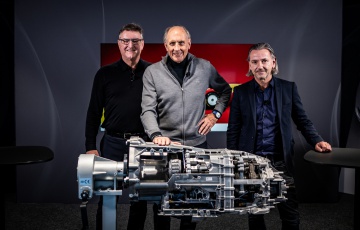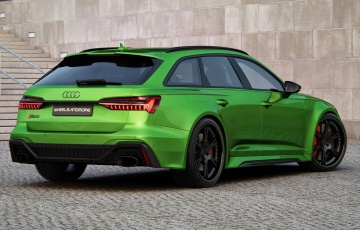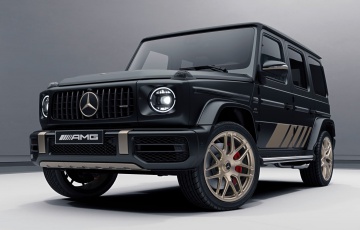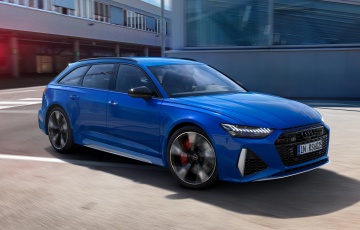Audi RS 3 Sportback 2.5 TFSI 2022 Review : 25th Hour
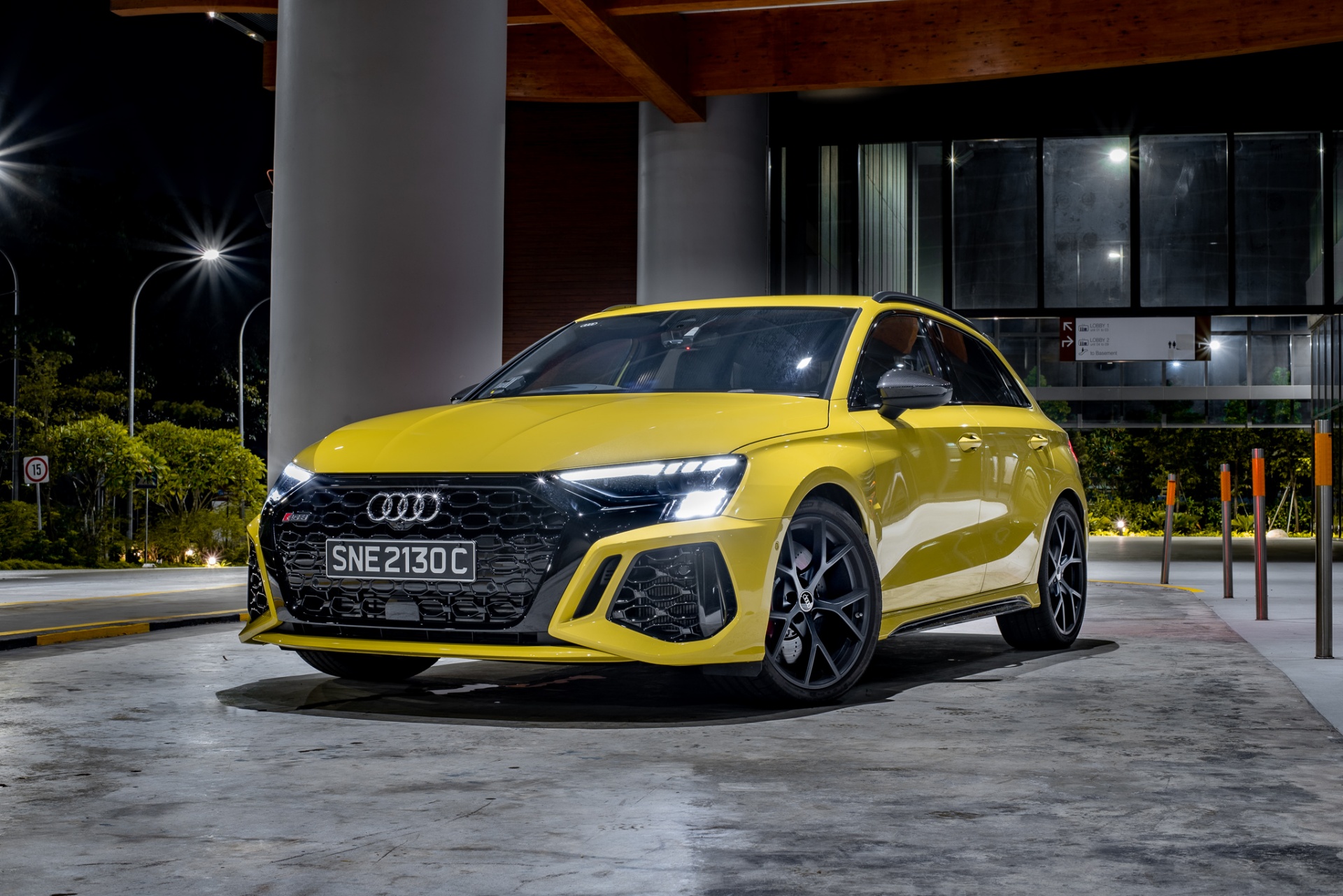
Audi RS 3 Sportback 2.5 TFSI 2022 Review : 25th Hour
Singapore - There’s nothing quite like the shrill pitch and throaty guttural growl of a straight-five engine.
Frankly, it’s astounding how a turbocharged 2.5-litre powerplant can produce such a sound and boast supercar worthy performance figures. But one only has to get behind the wheel of Audi RS’ latest performance compact, the RS 3 Sportback, for a few minutes to understand why it’s so damn special.
Granted, it’s a car that we’re already familiar with here at TopGear Singapore, having taken this Python Yellow Sportback and the Kyalami Green RS 3 Sedan on a shakedown at the Changi Exhibition Centre. Alas, I was a month shy of the minimum age requirement to drive an Audi RS car during the launch event in April. So while I had to settle for watching from the sidelines, my editors got to put the cars sideways around a custom circuit and engage in some tyre shredding shenanigans.
That being said, beggars can’t be choosers. So when I was finally offered the keys to the RS3 Sportback for a road test, I did not hesitate. After all, I’ve waited months for it.
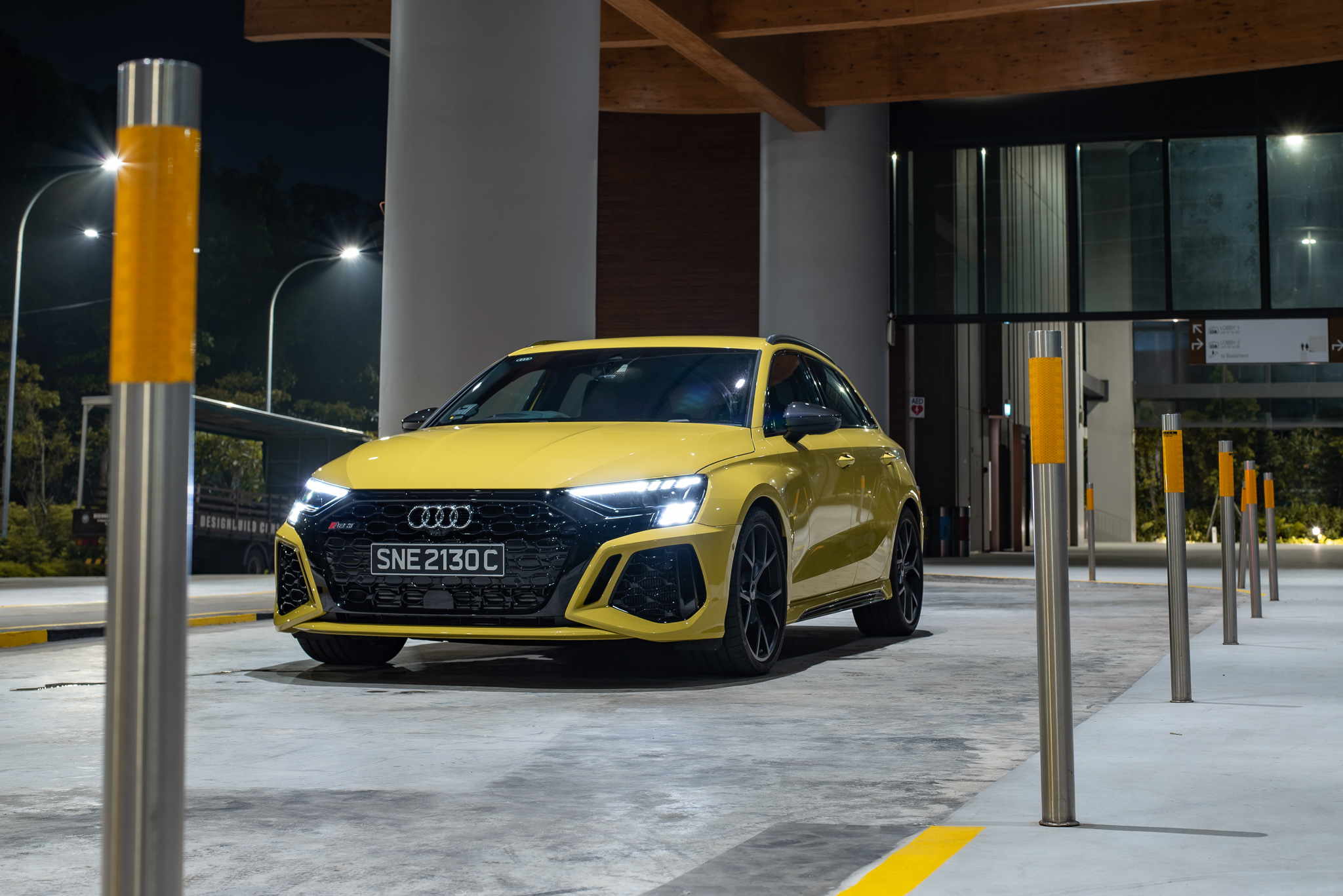
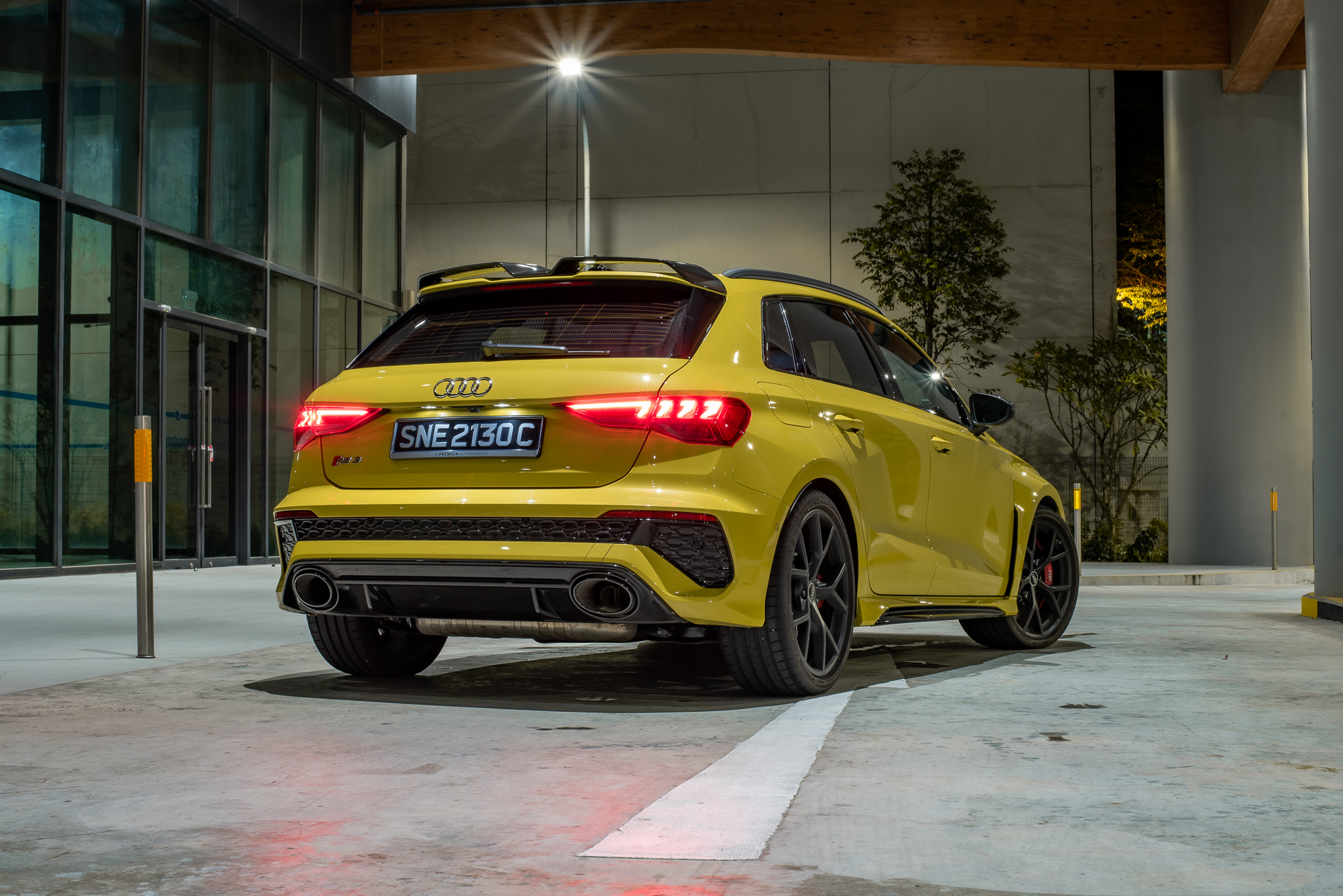
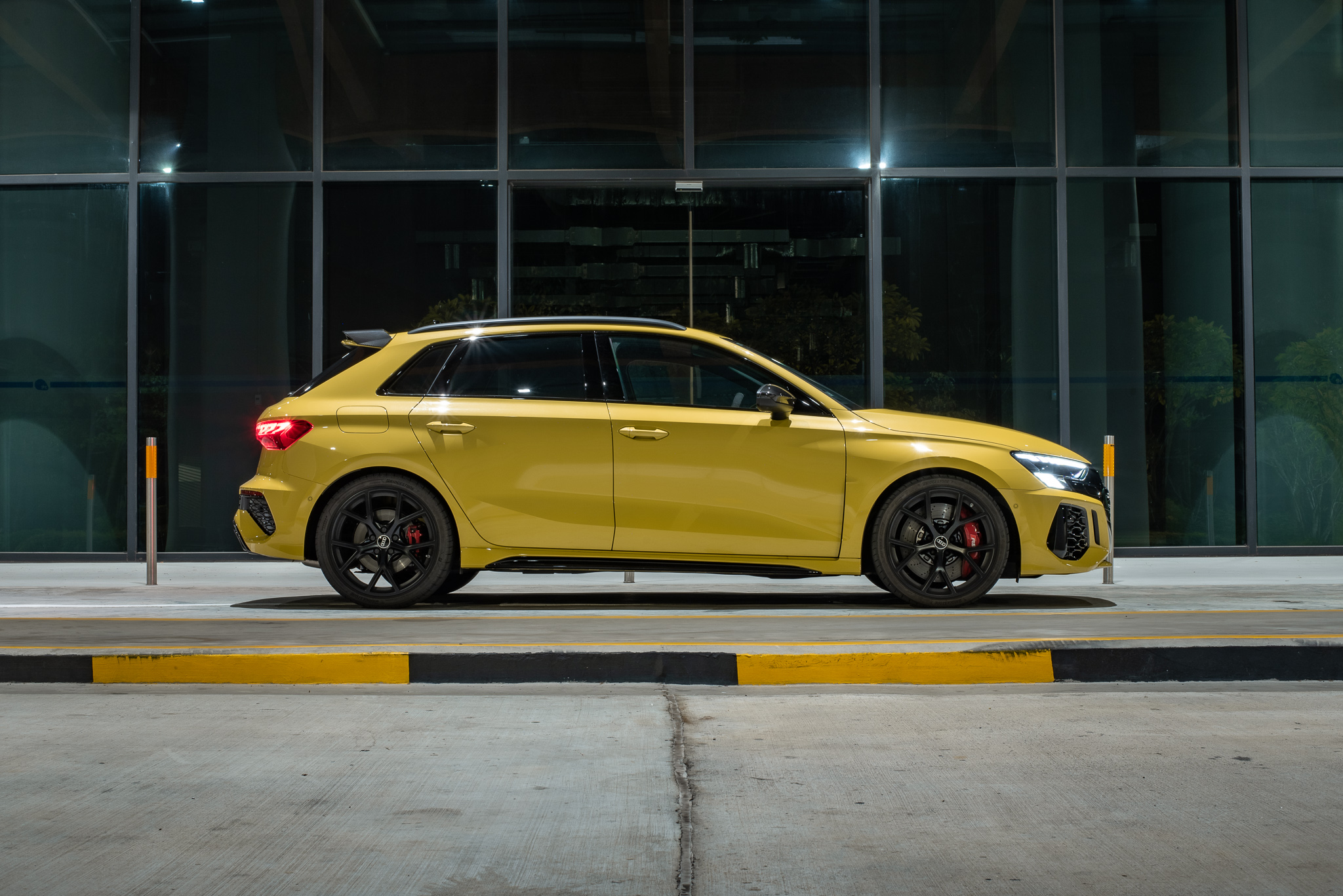
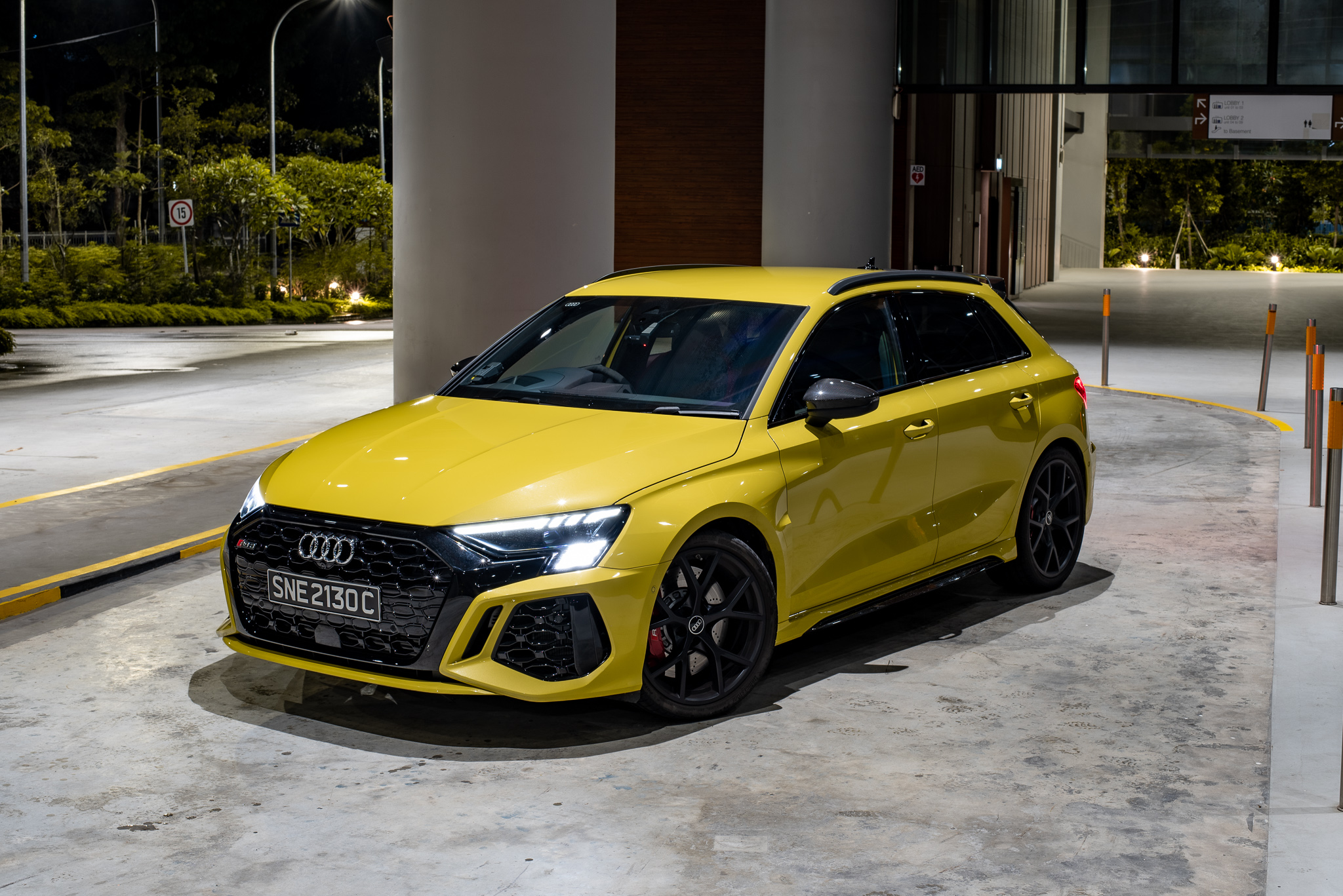
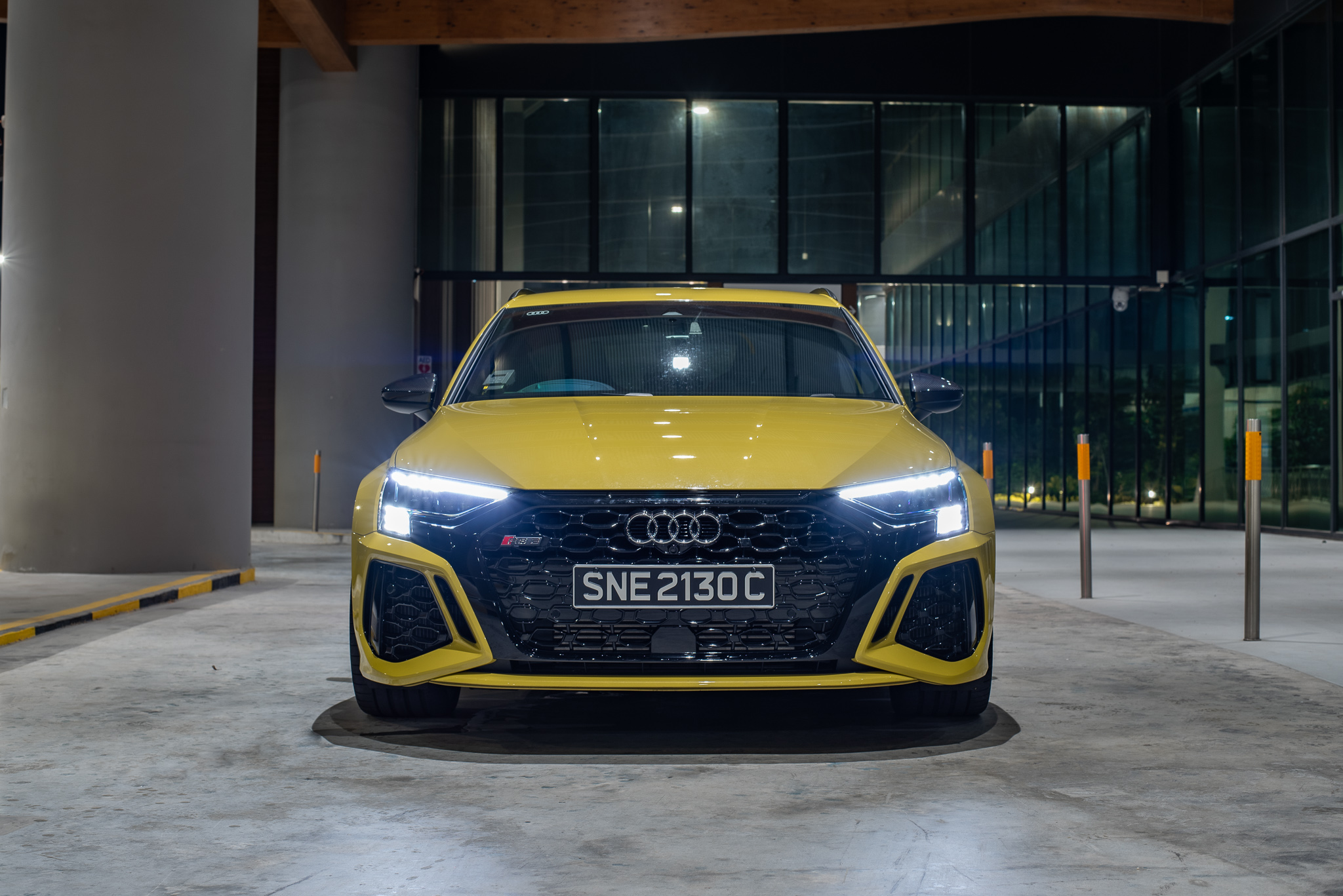
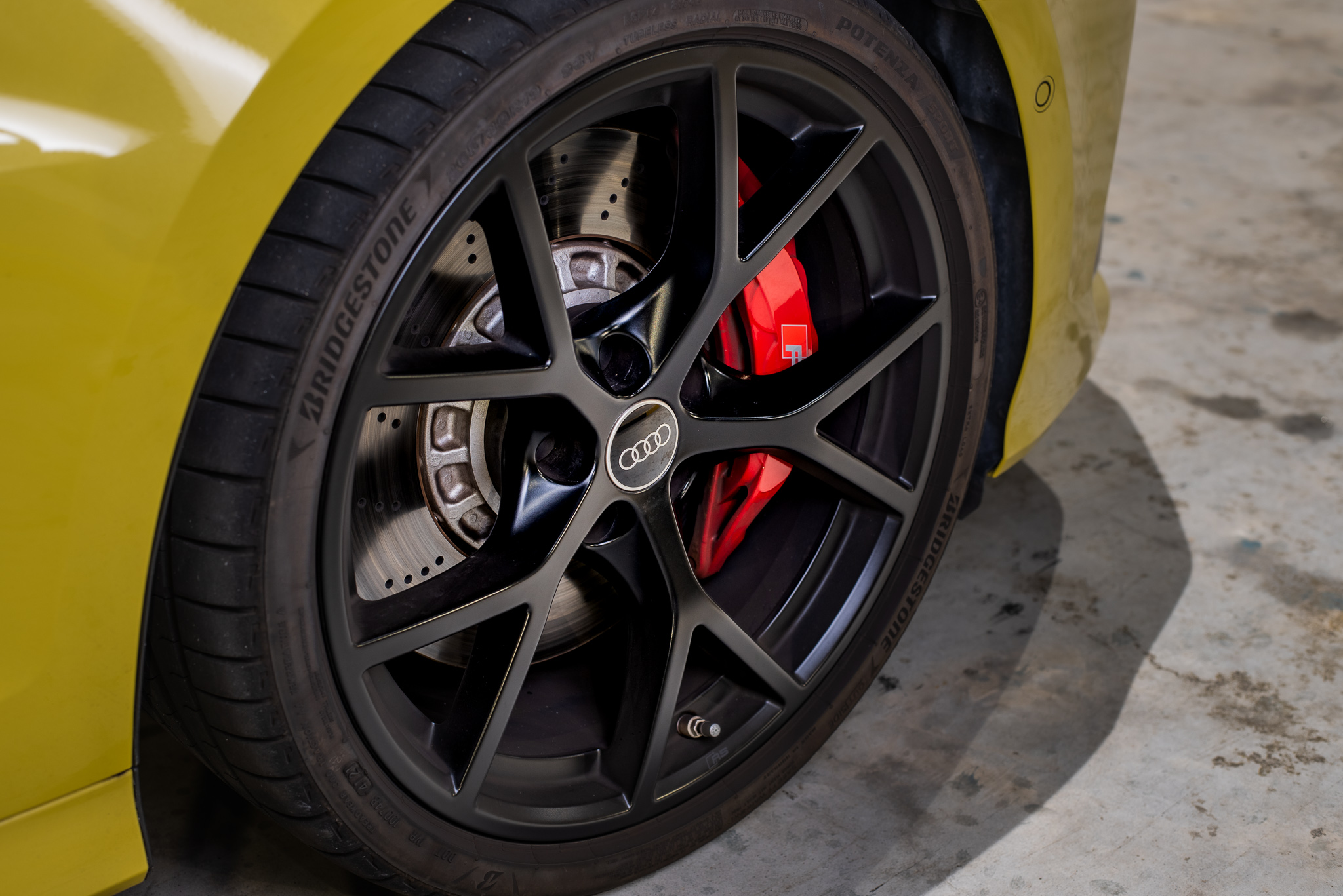
Audi RS 3 Sportback - Exterior
Right off the bat, the RS 3 Sportback checks all the boxes for a proper performance-oriented hatchback. As is, the standard 8Y-generation Audi A3 already looks suitably tarted up with sporty embellishments. But this RS car bumps up the car’s aggression factor up several notches, as if the A3 underwent a strict CrossFit training regiment.
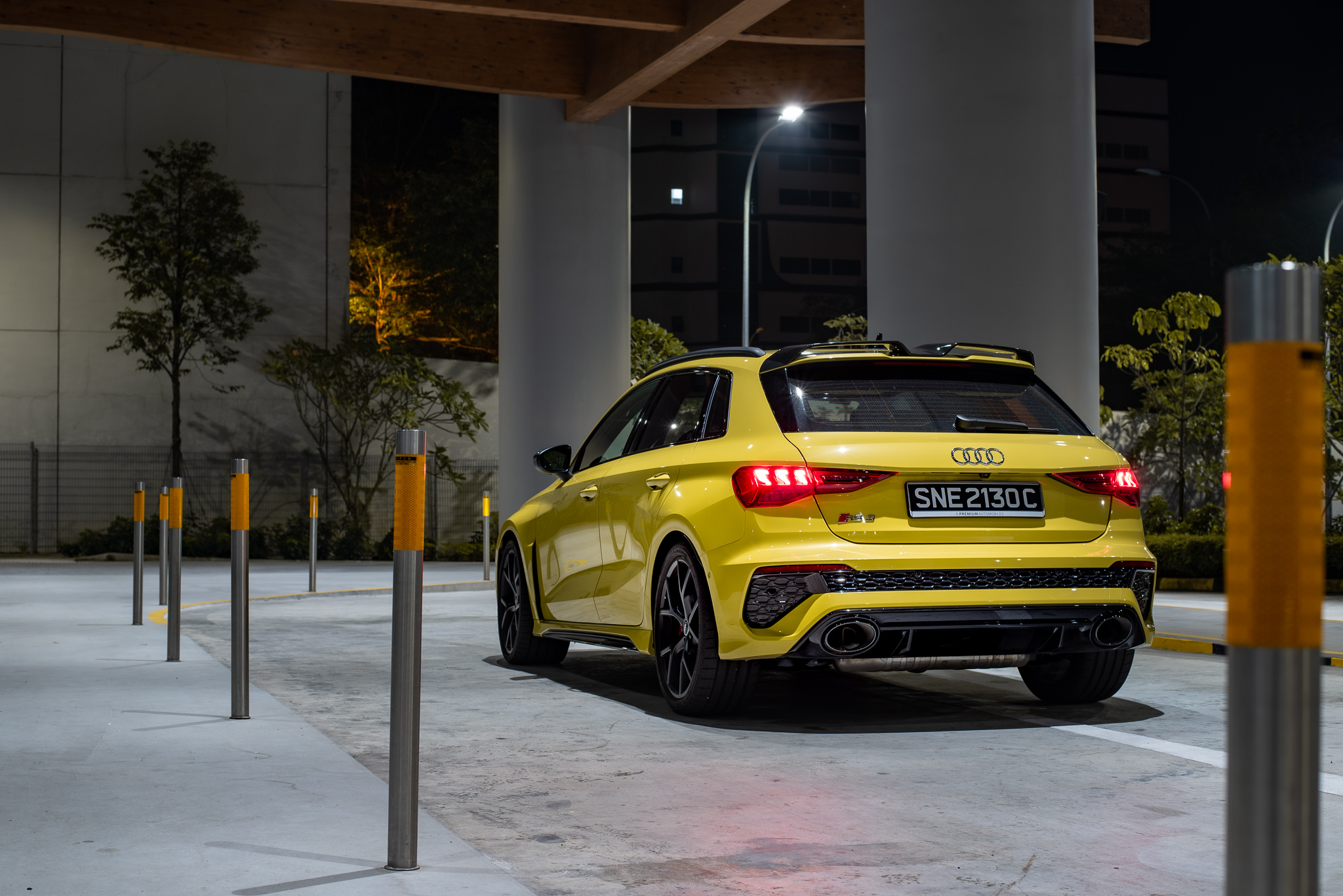
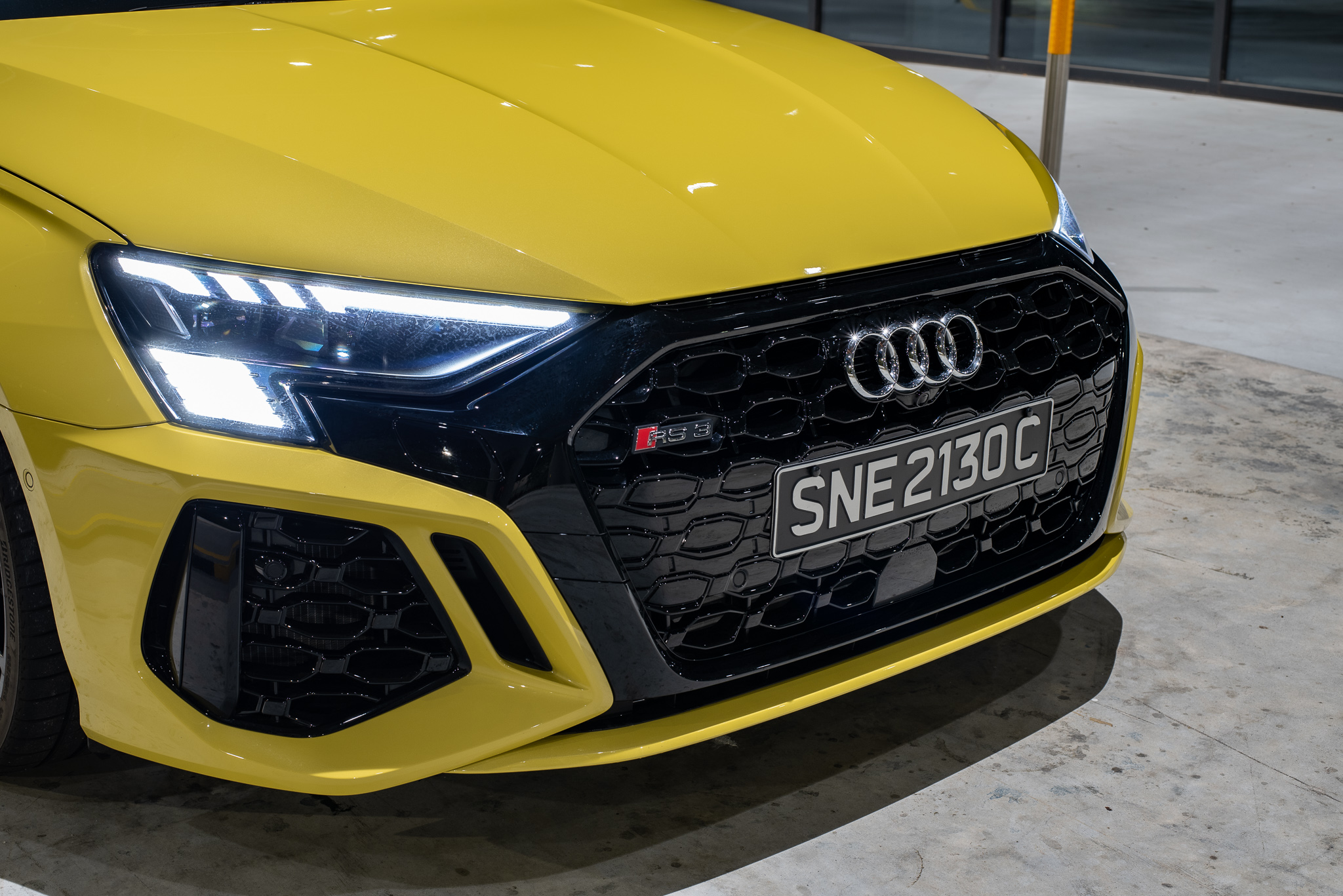
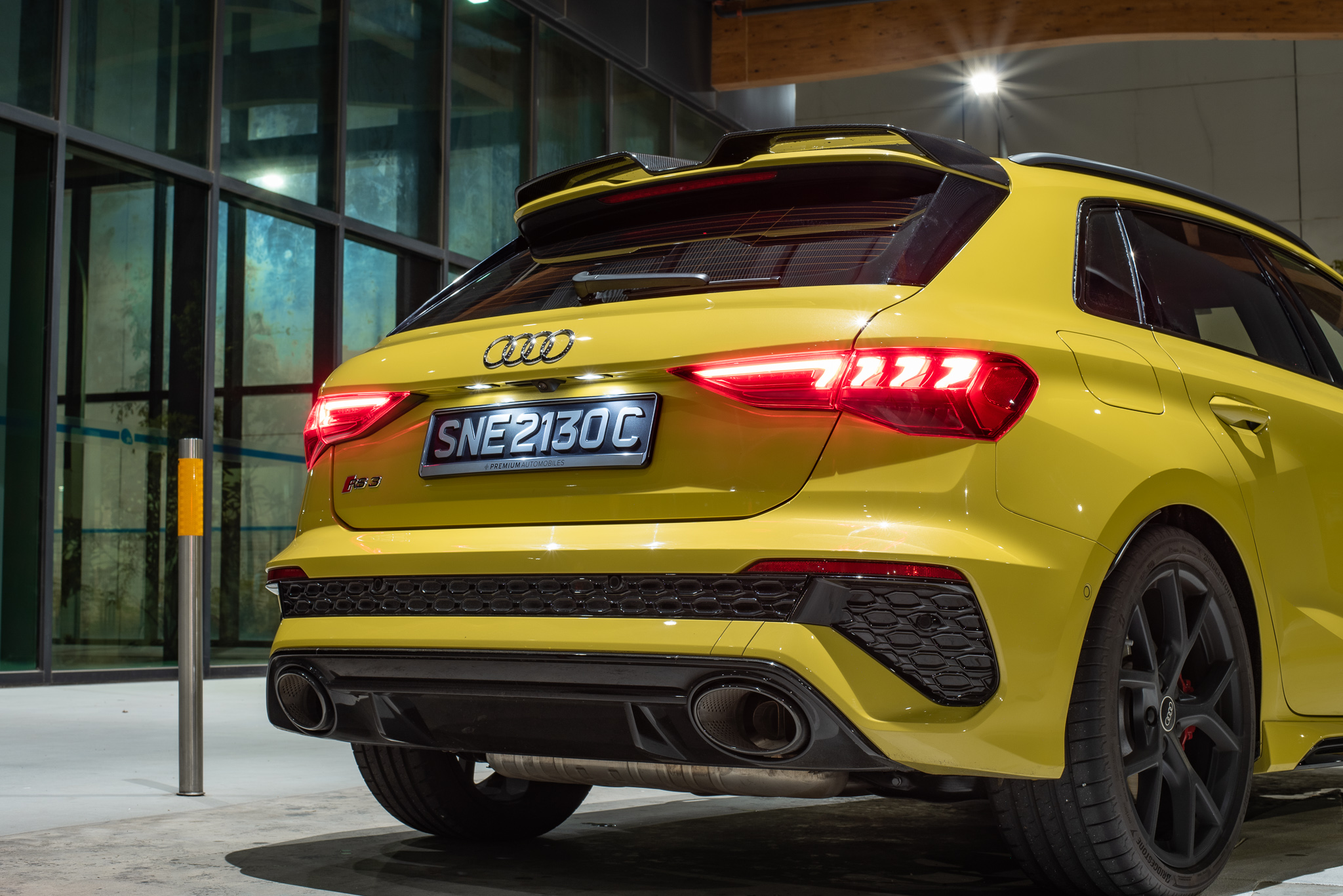
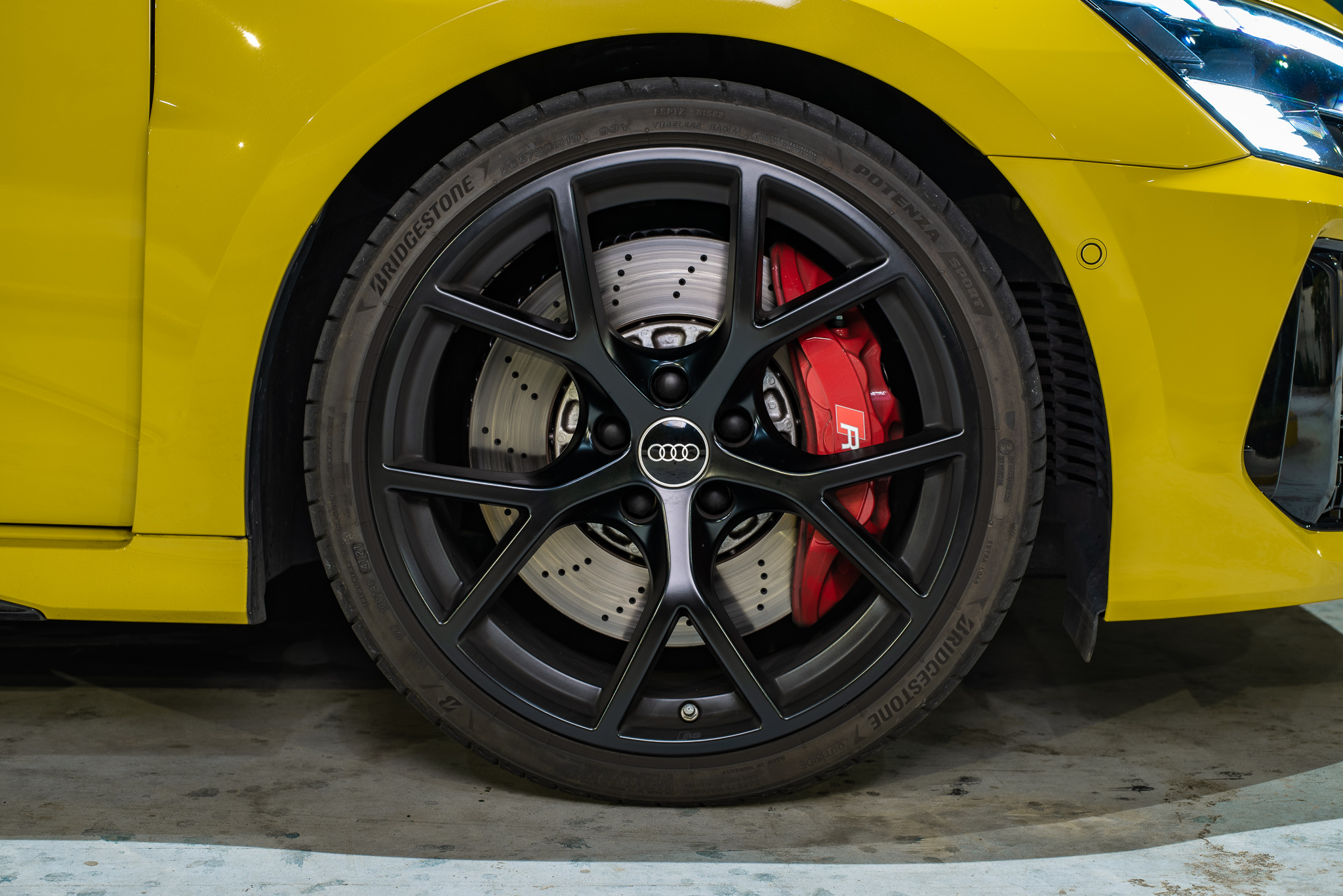
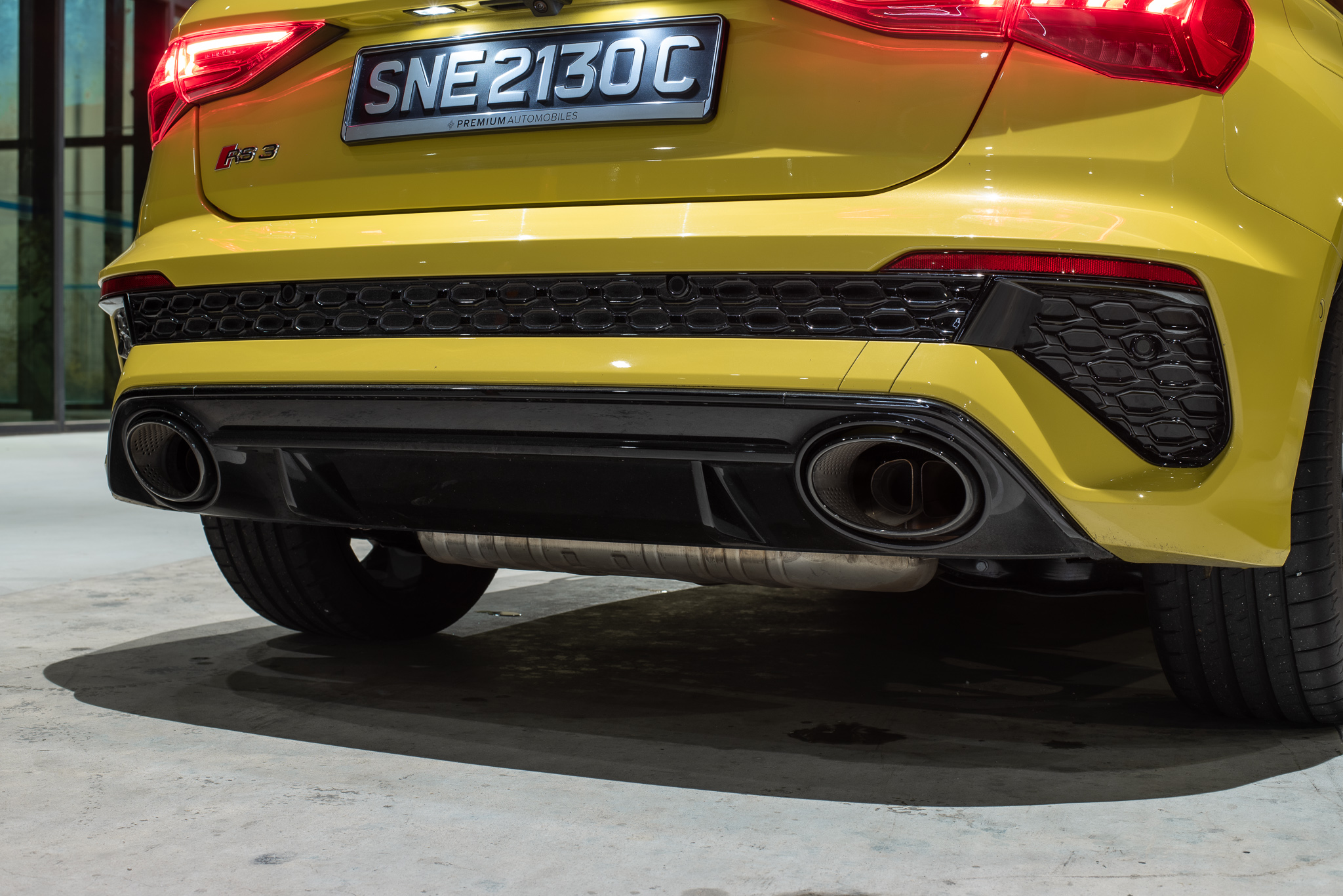
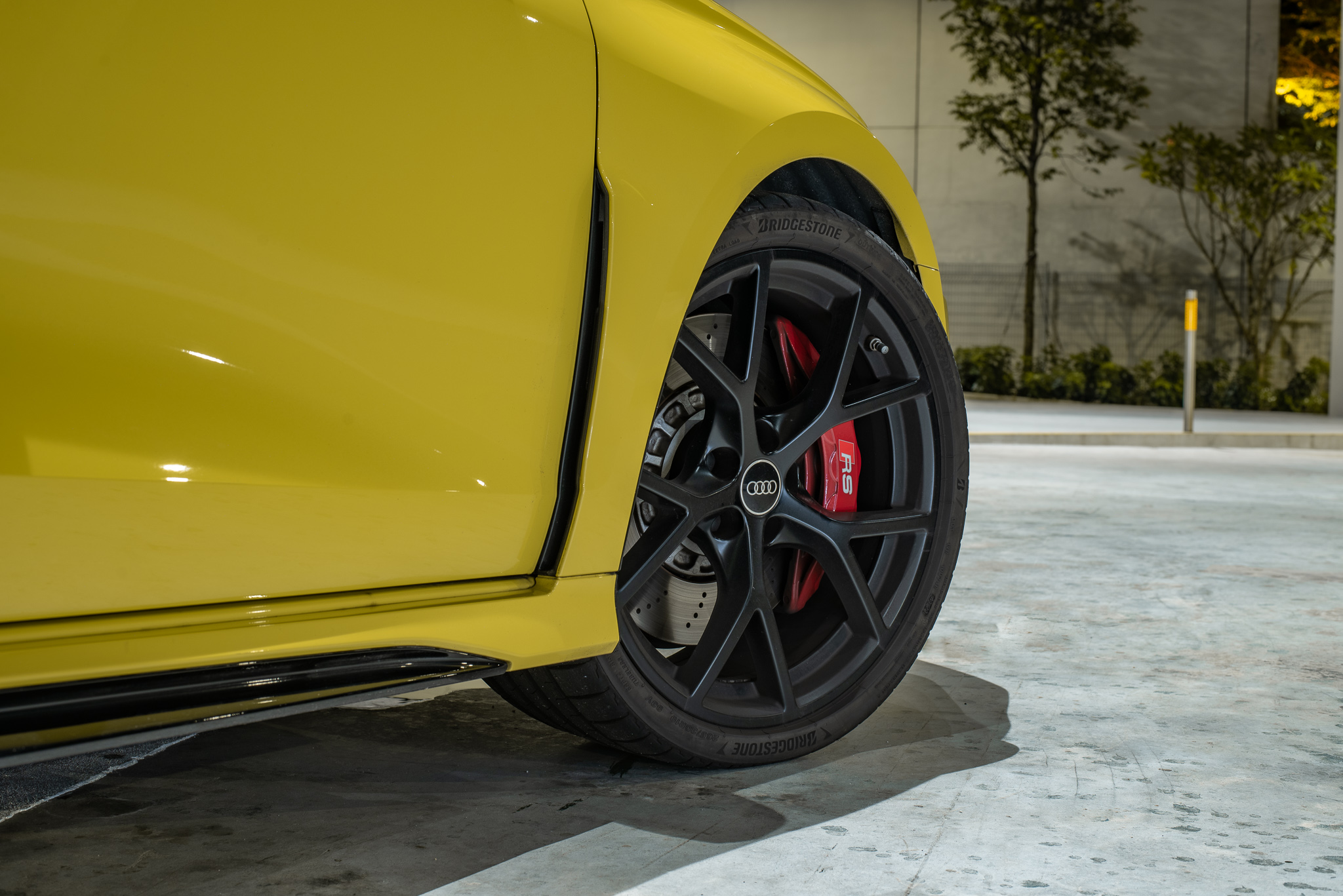
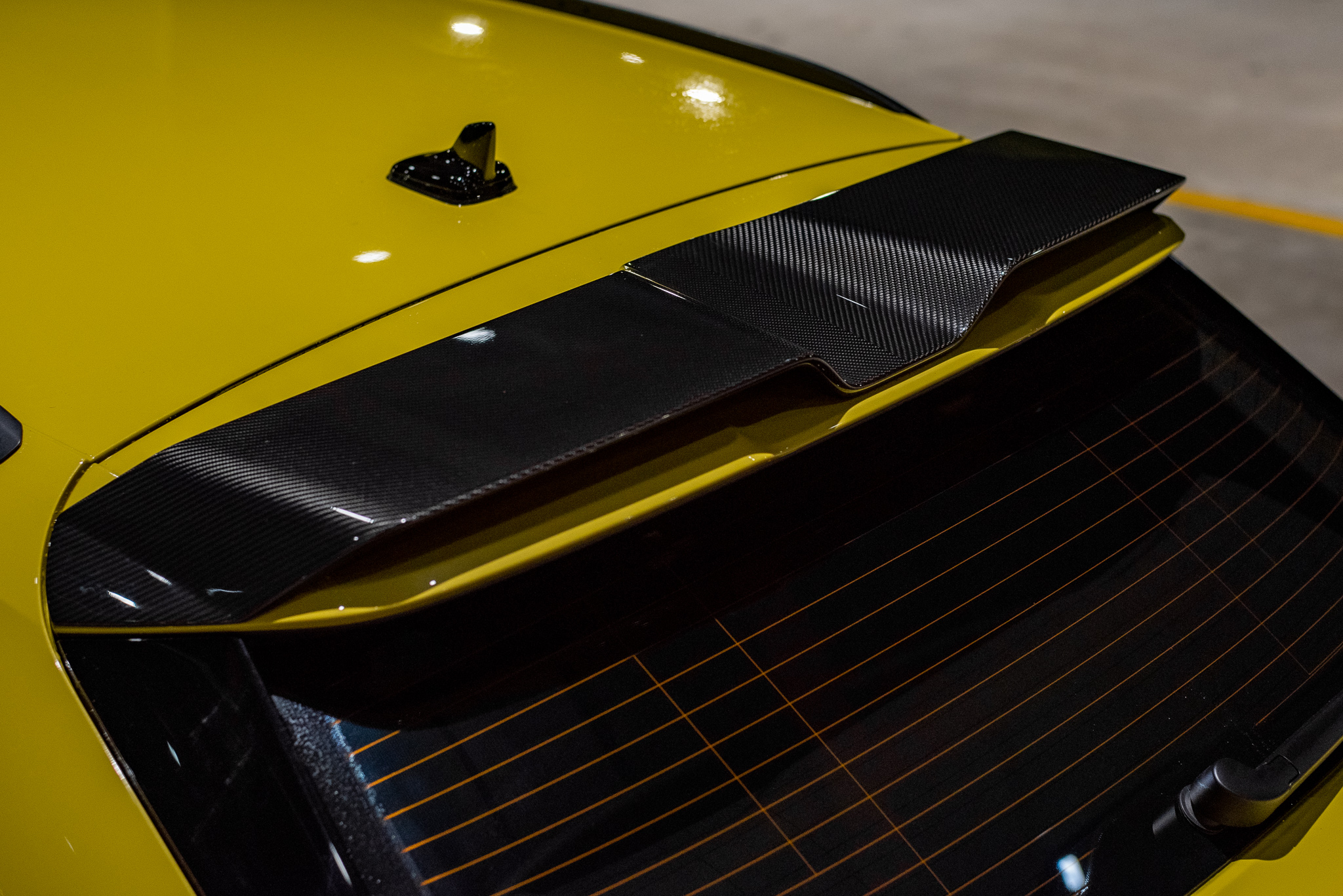
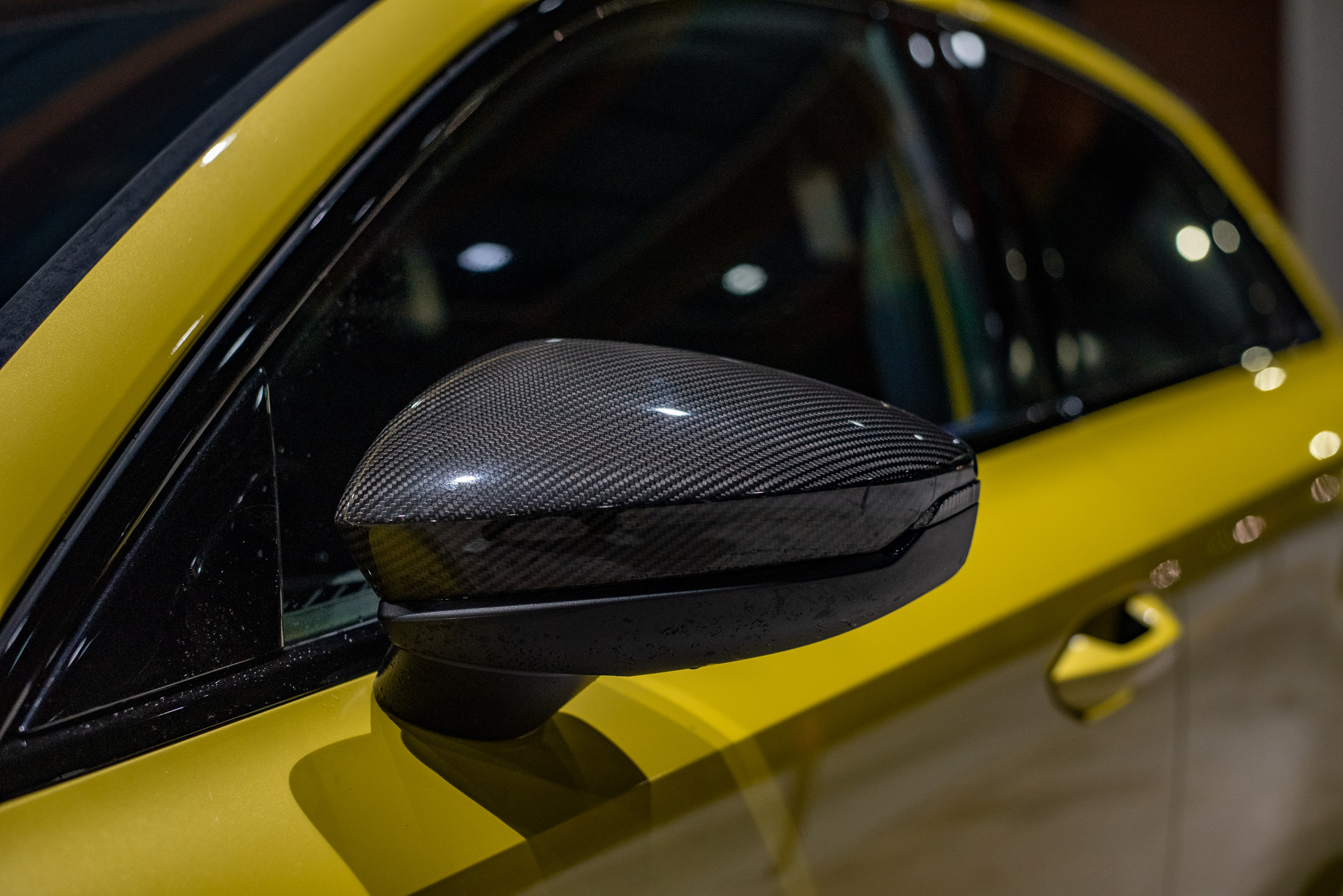
The RS 3 is 33mm wider in the front and 10mm wider in the rear compared to the base car, and it’s got the requisite blistered arches and flared fenders to sheathe the added width of the car. Various aspects of the bodywork are now clad in gloss black veneer and lashings of carbon fibre. In fact, the front fascia is almost entirely dominated by the gloss black singleframe grille, flanked by two massive vents on either side. In the rear, you get some faux vents and large black oval exhaust tips set into a rather subtle gloss black diffuser.
Matrix LED headlamps come as standard on the RS 3 and for added bragging rights, the little segmented portion of LEDs under the driver side headlamp actually spells out R-S-3 when you unlock the car. A feature that pales in comparison to the projector light show in the e-tron S Sportback, but it still helps raise the overall “cool” factor of the car. Unfortunately, the flair and flamboyance of the exterior isn’t exactly translated to the interior.
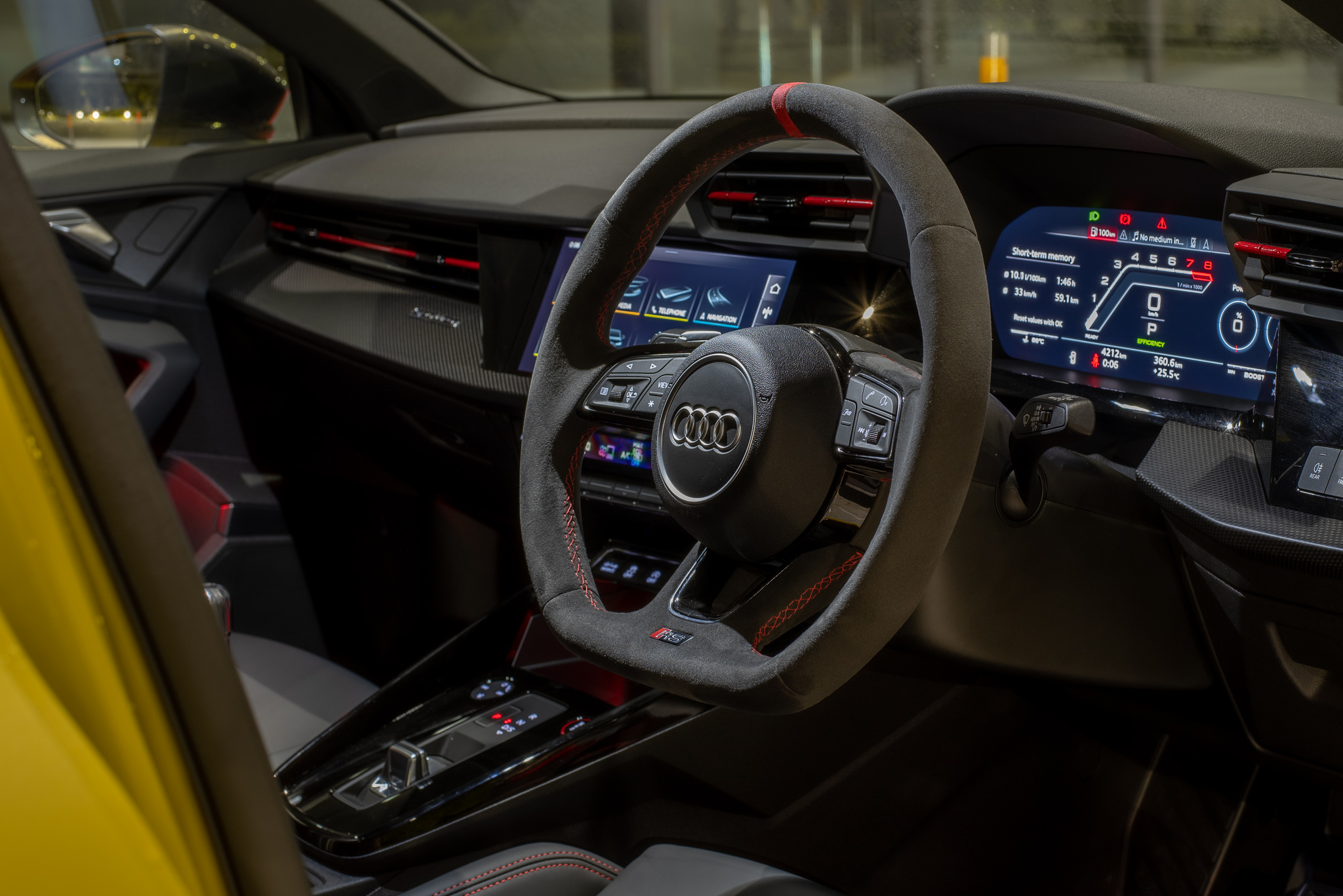
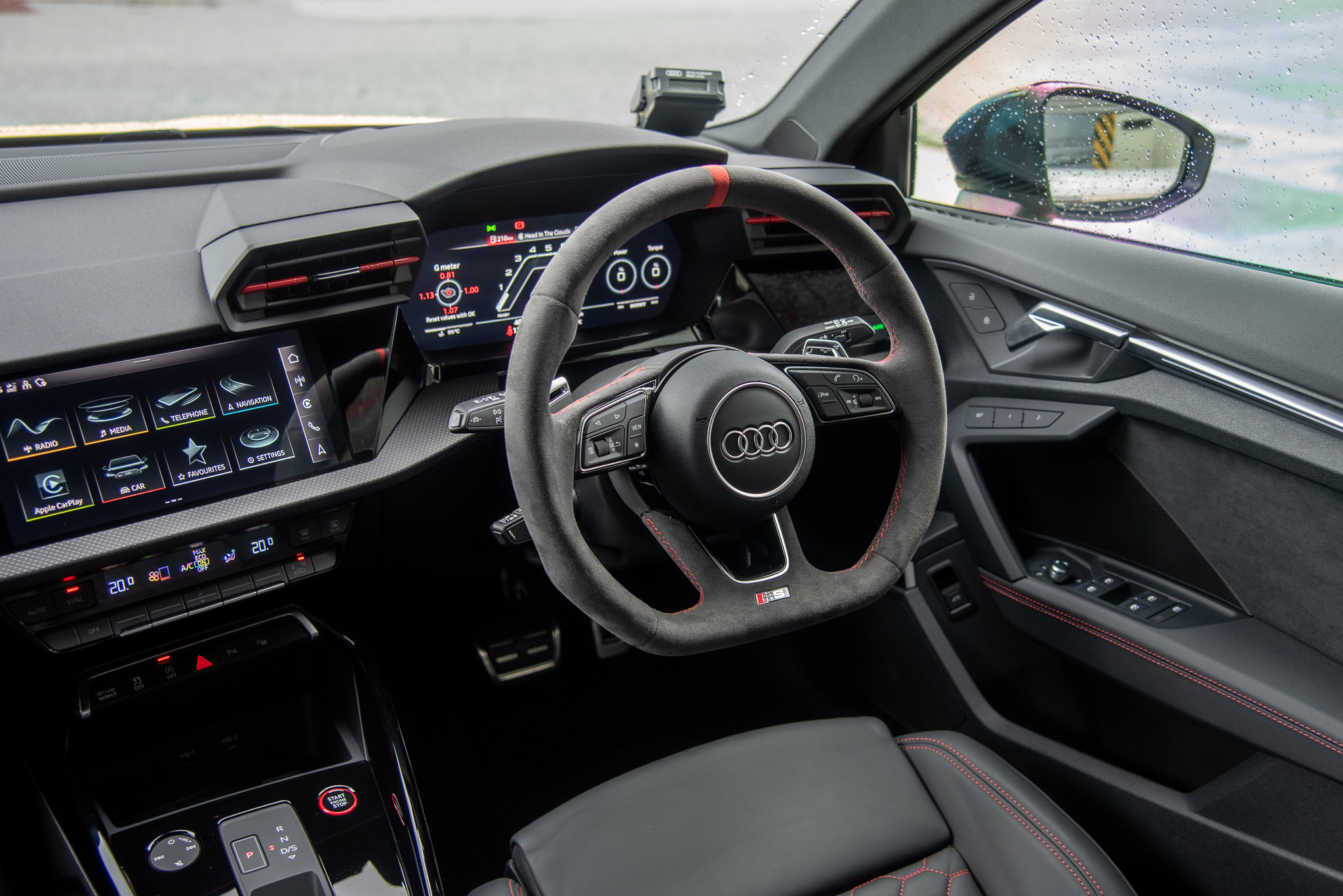

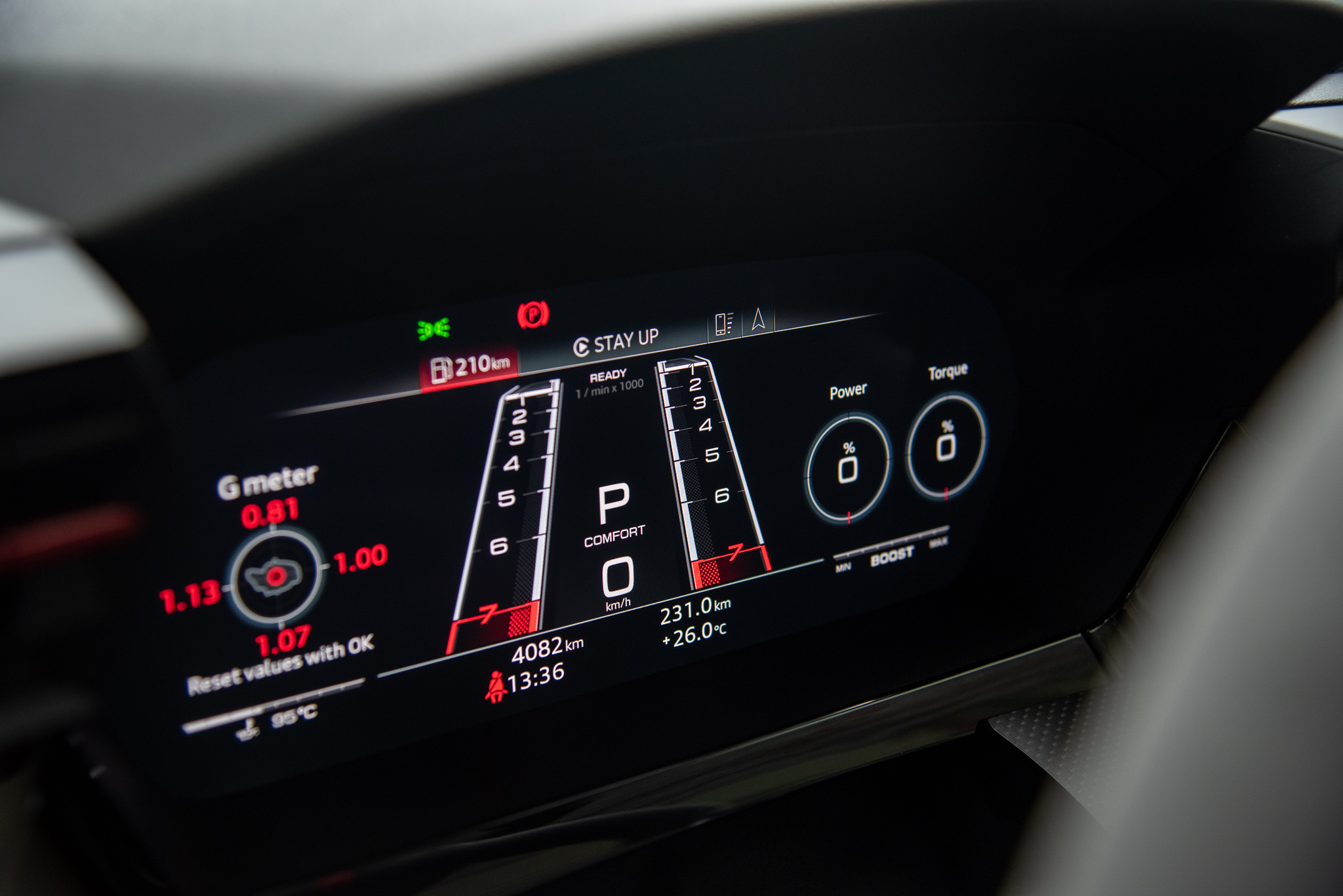

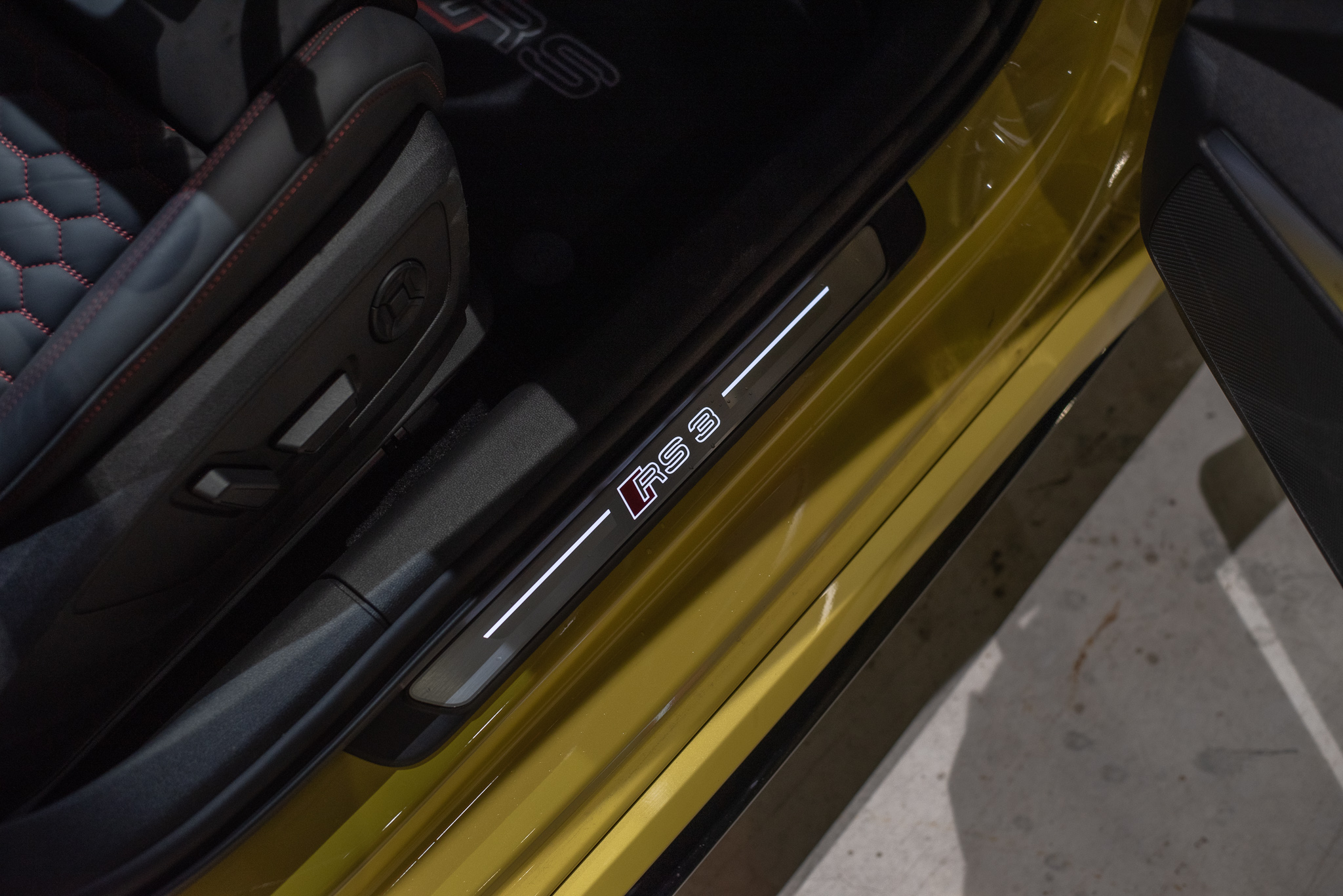
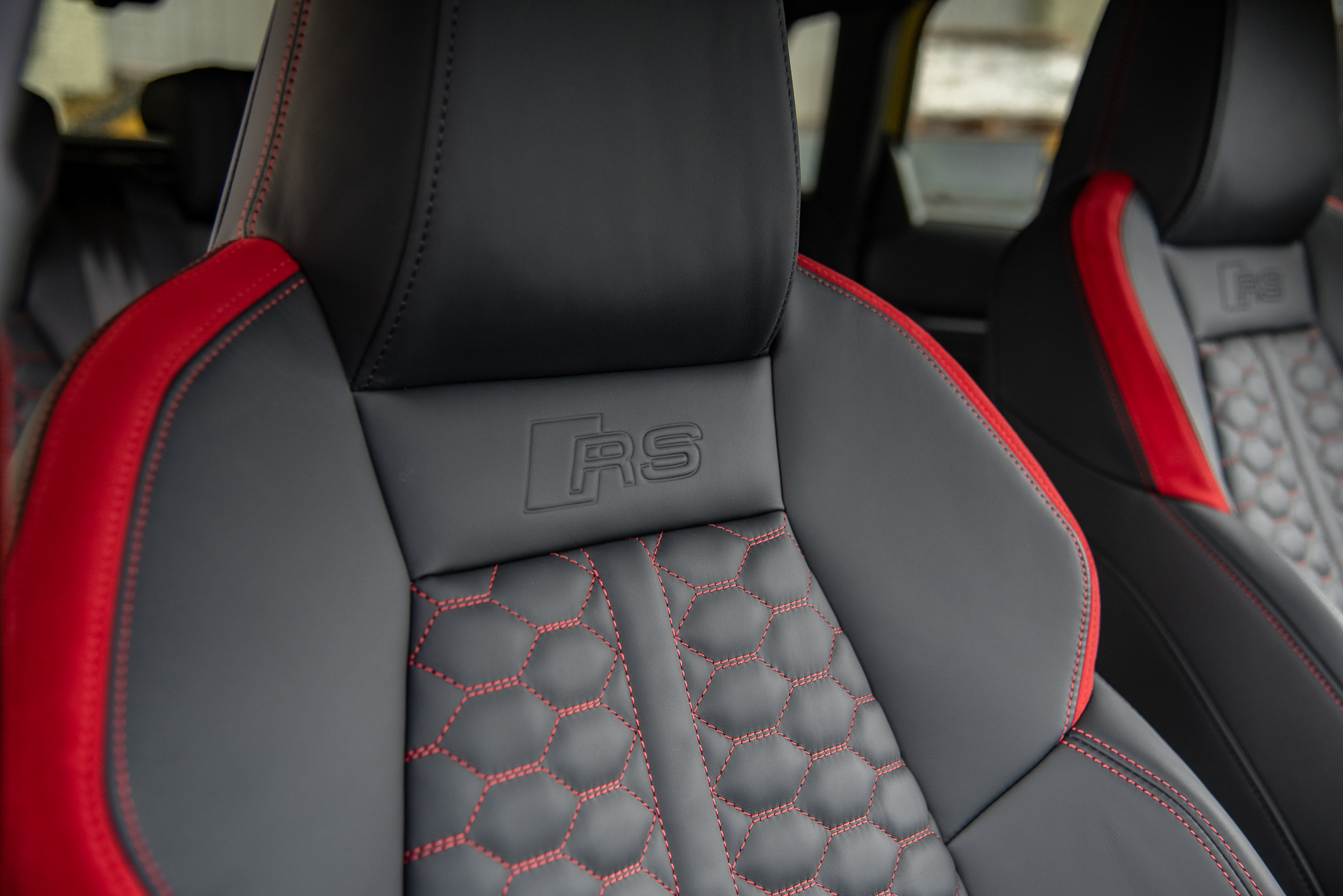
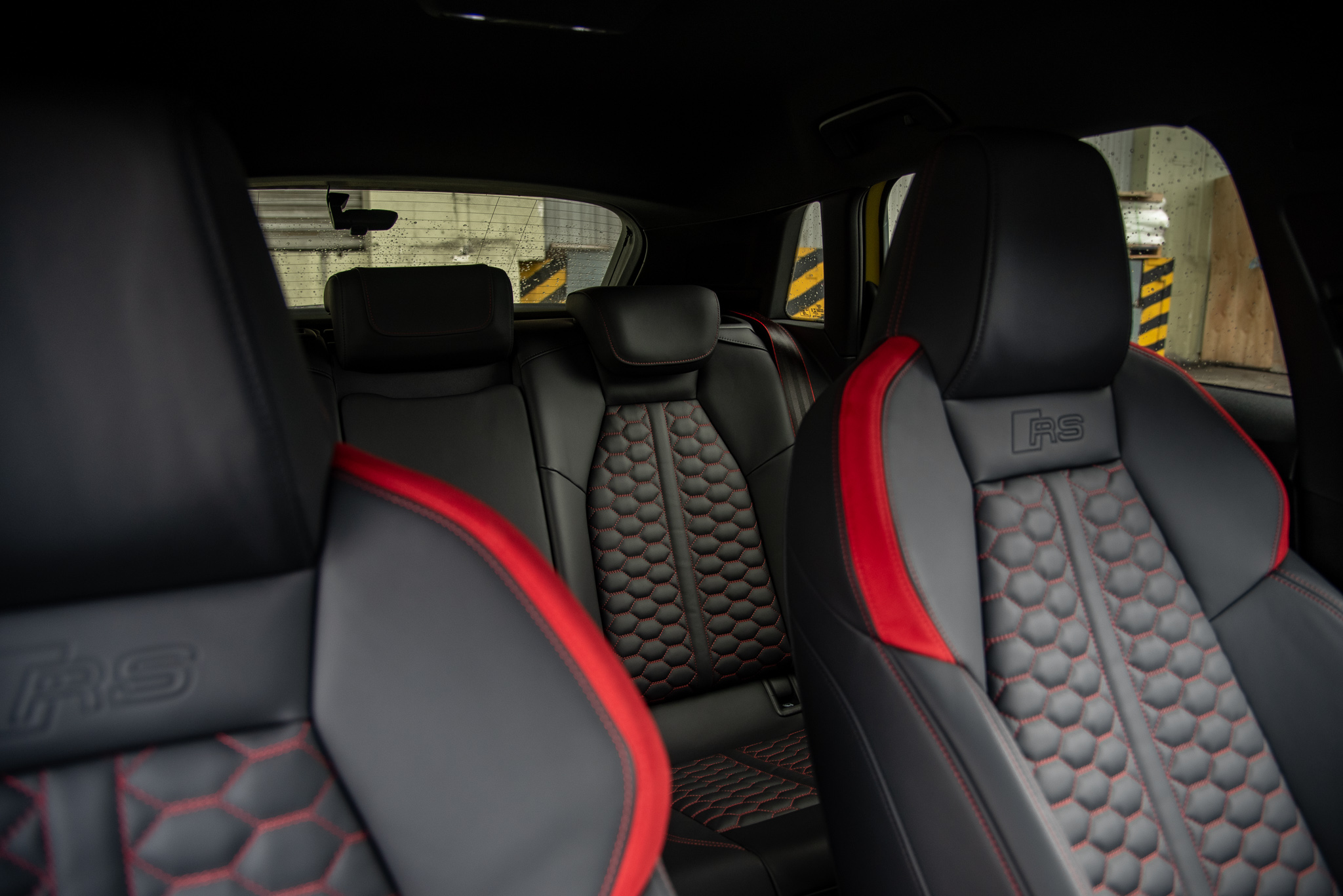
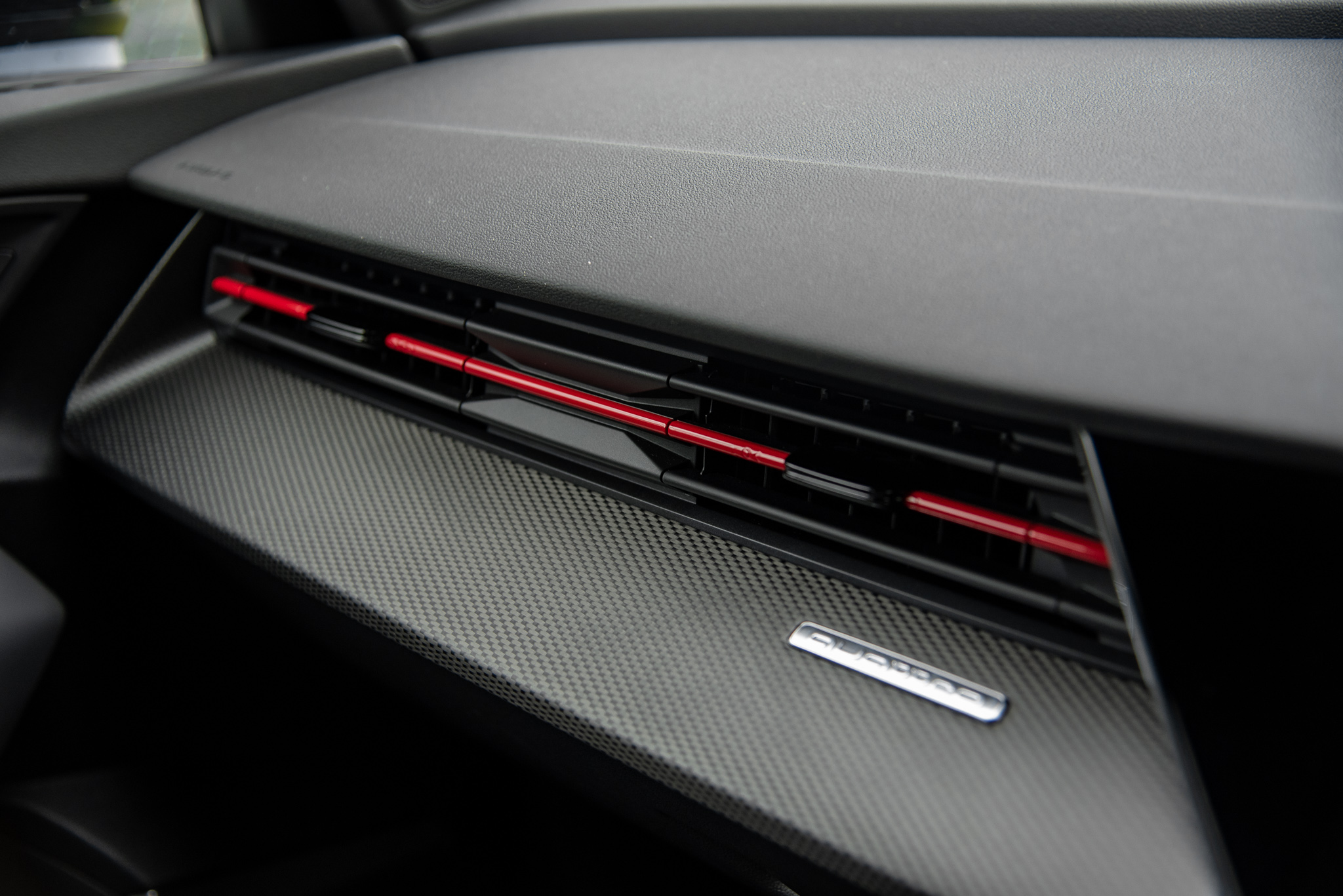
Audi RS 3 Sportback - Interior
Stepping into the RS 3, one would still be acutely aware that it’s a car that has been fettled for performance. You get a flat-bottomed Alcantara steering wheel, sportier RS bucket-style seats and additional bits of red trim and carbon fibre inlays in the dashboard. But otherwise, it’s an interior that bears a striking resemblance to the cabin in the standard 1.5-litre Audi A3, or the S3 Sedan for that matter.
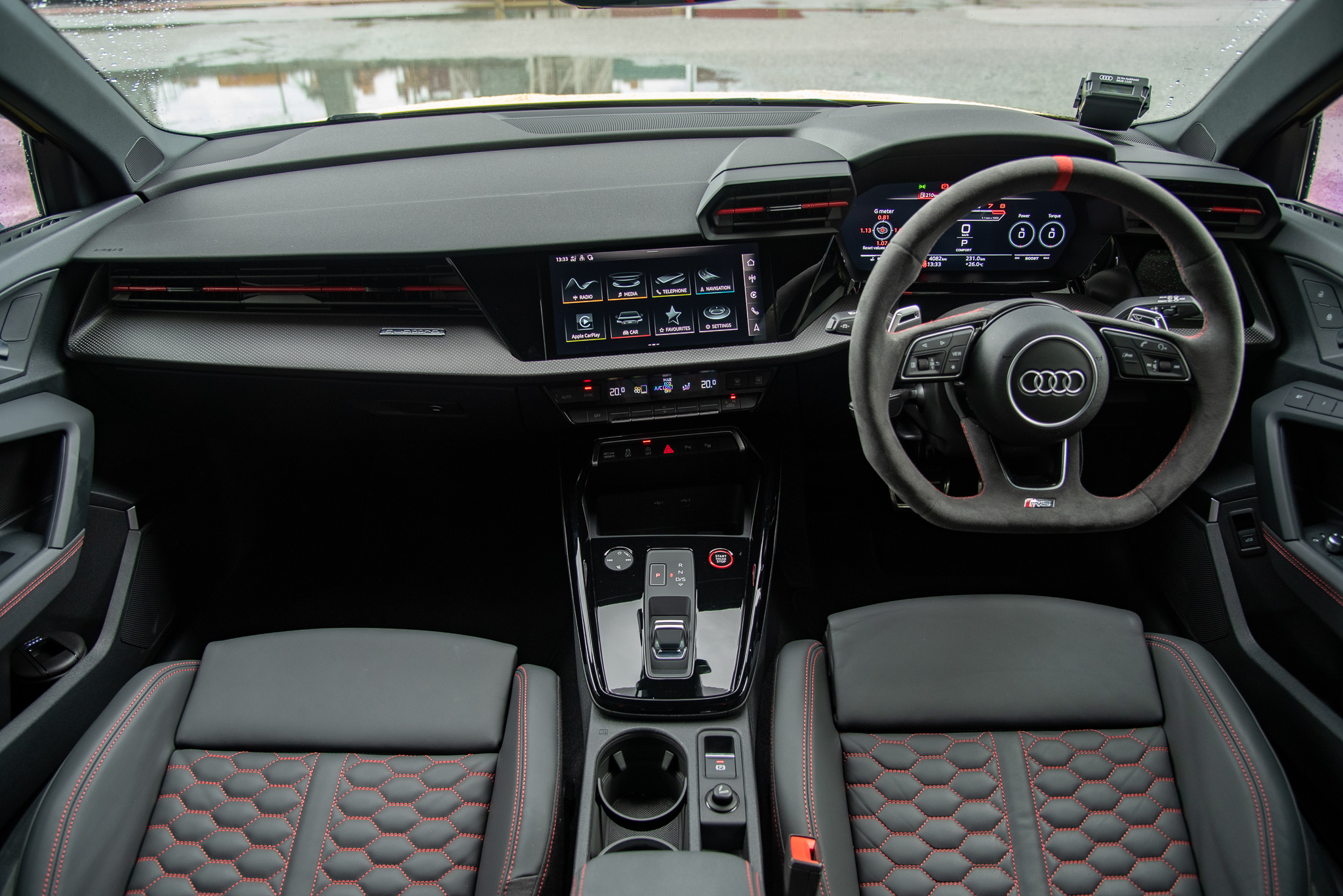
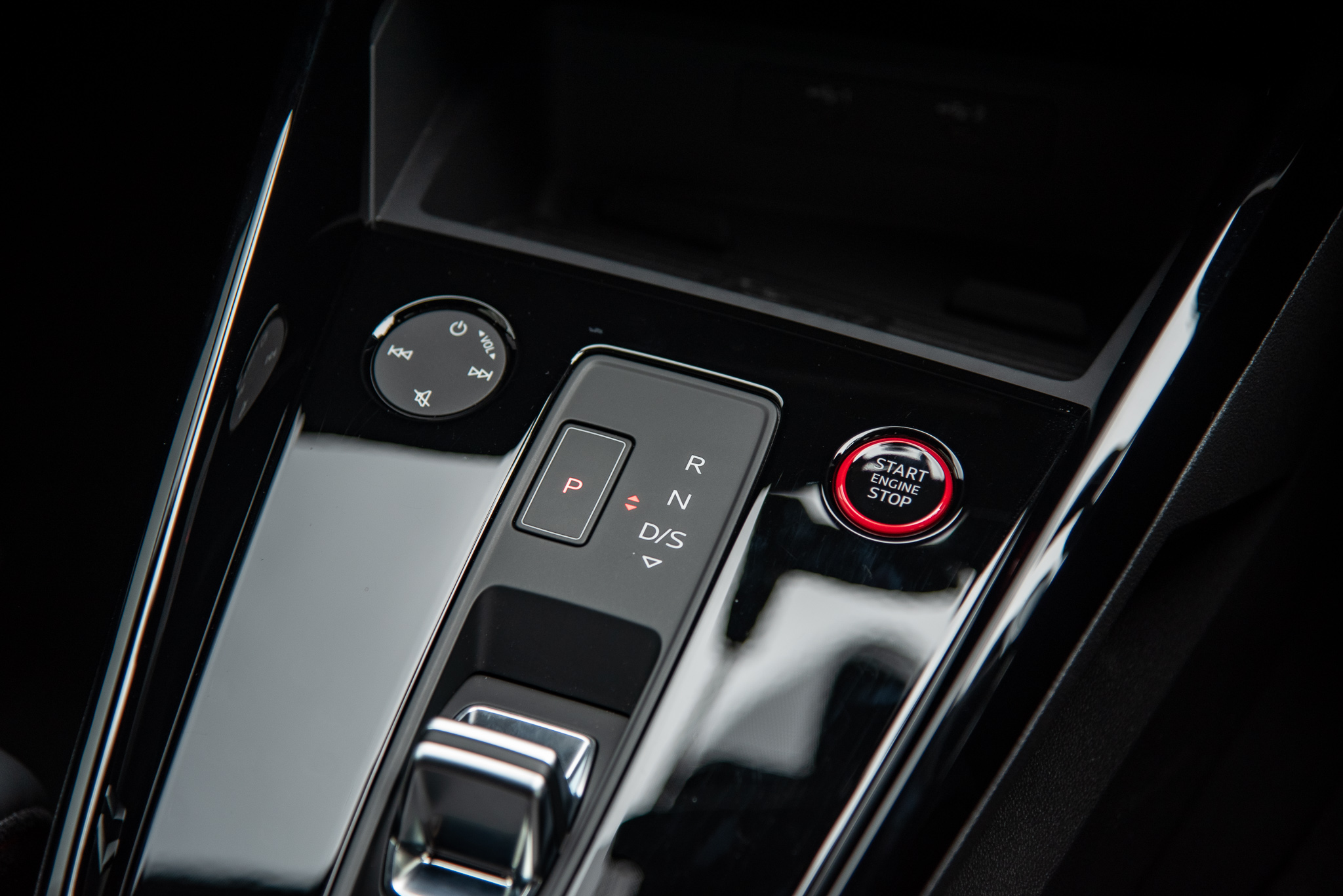
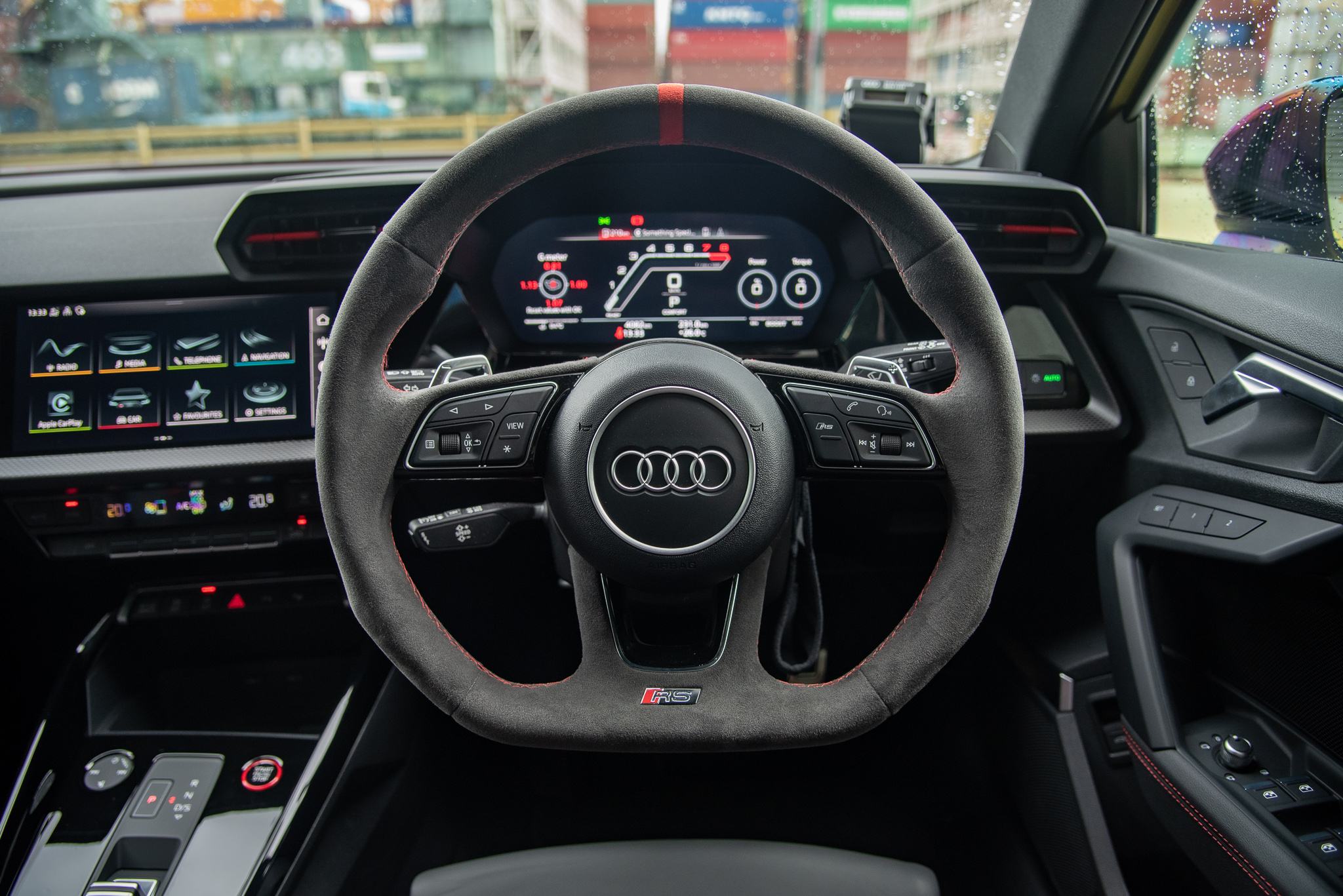
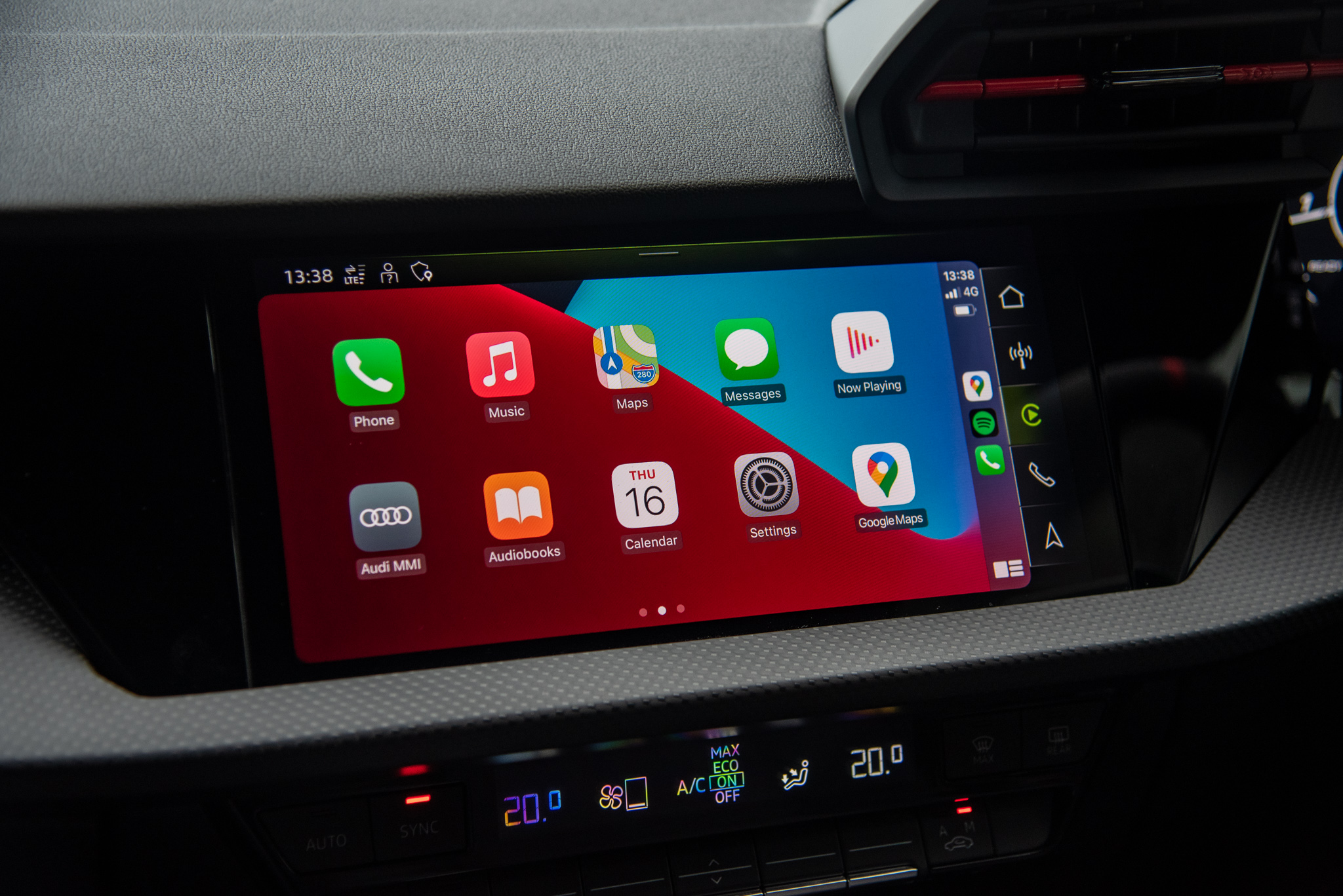
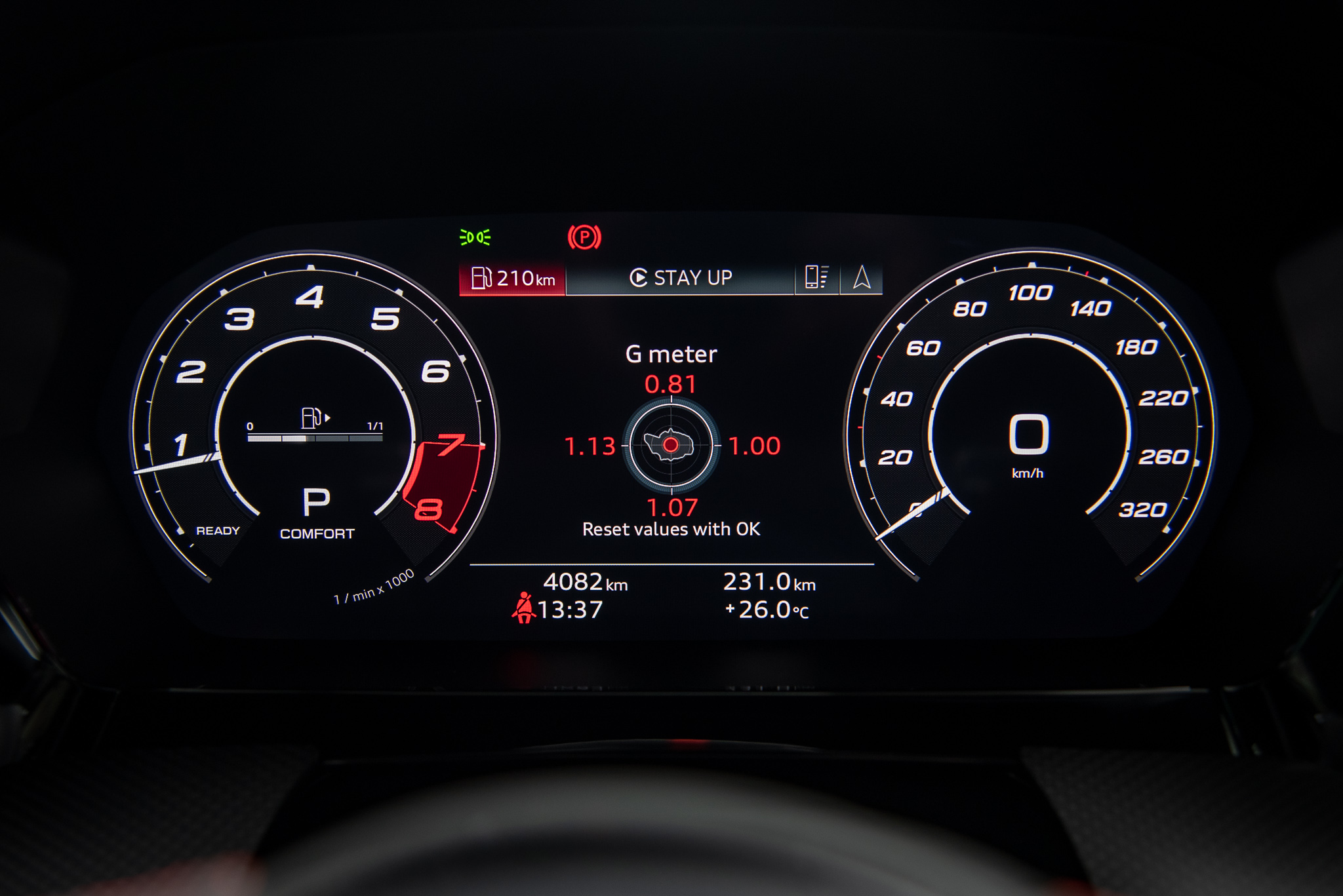
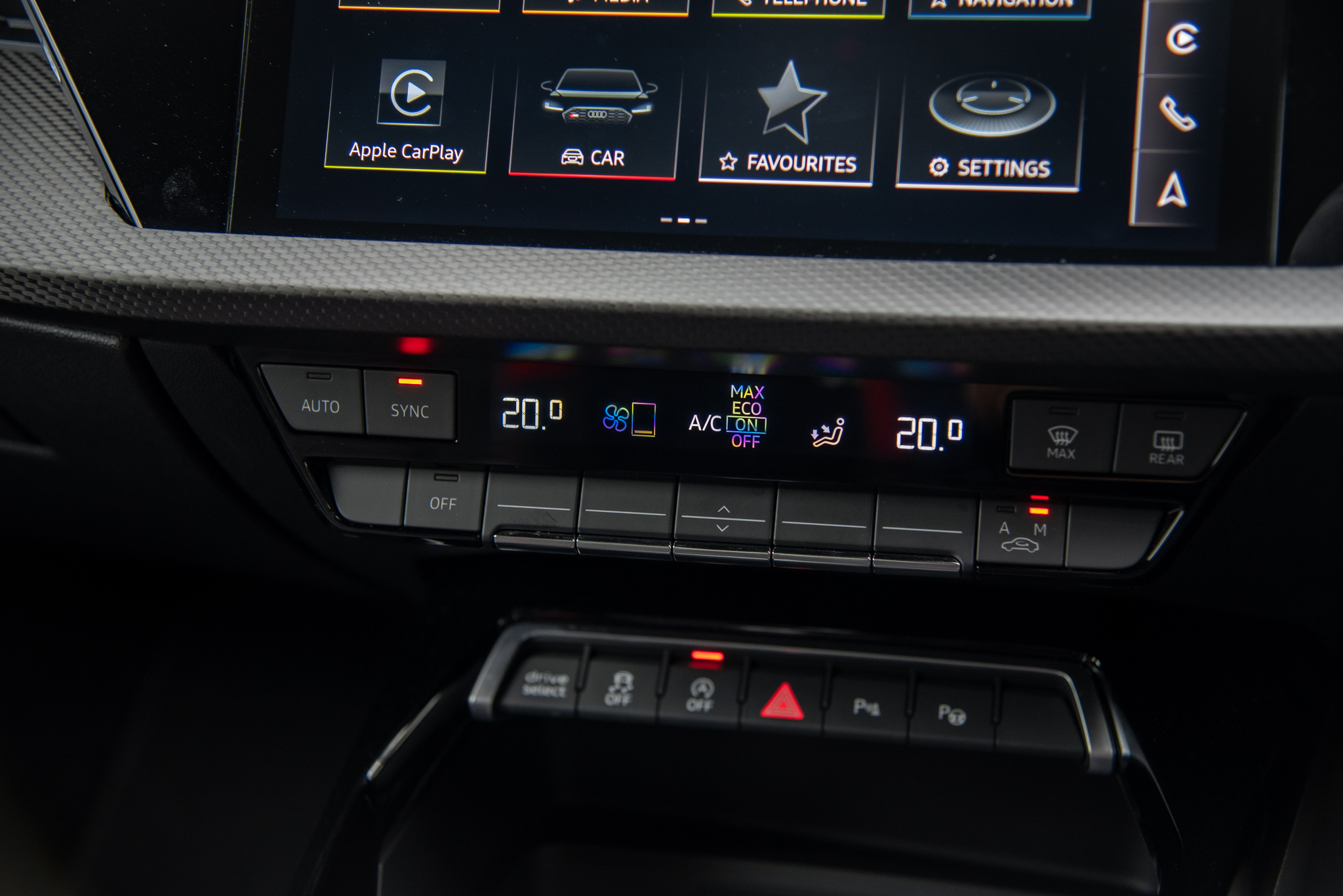
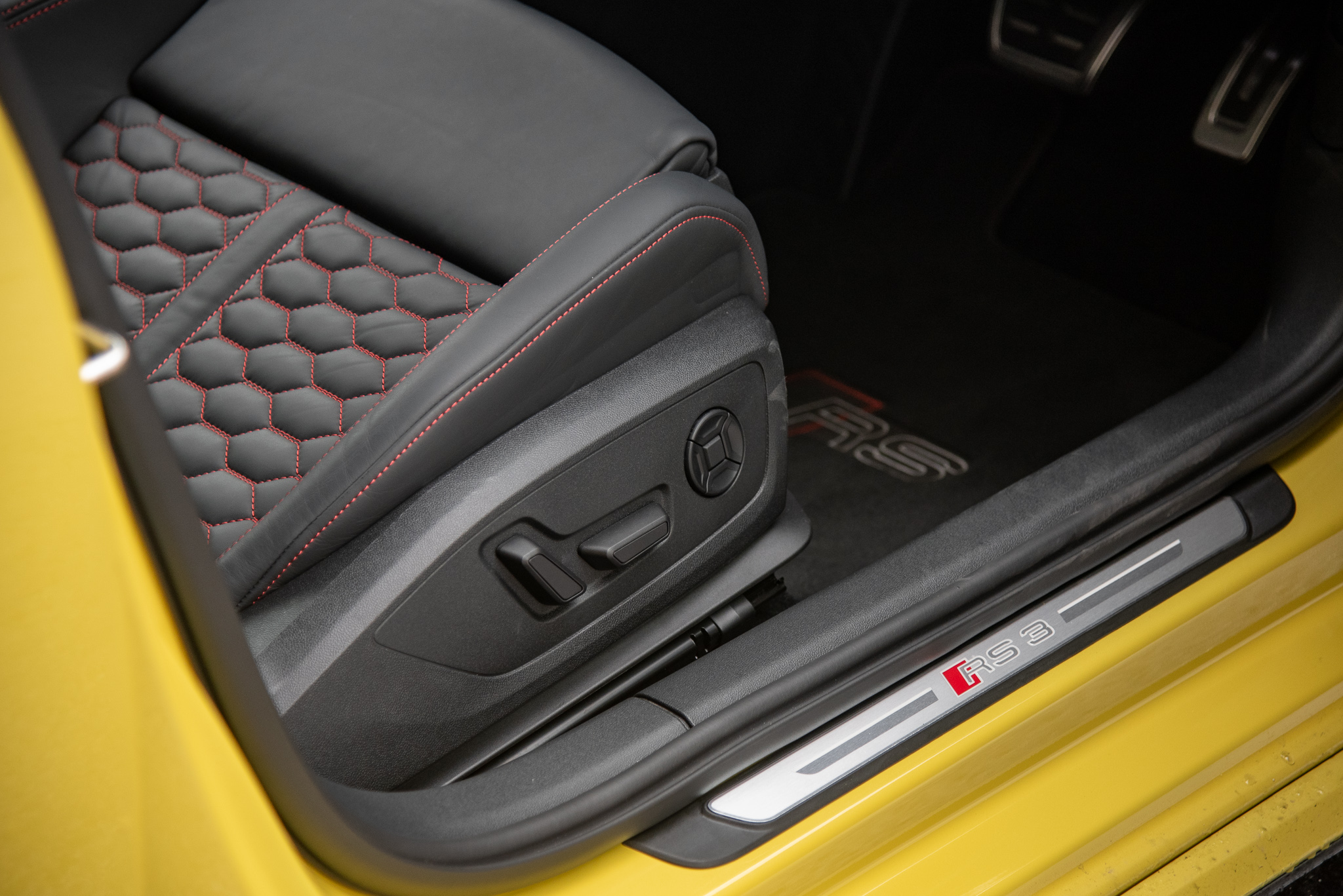
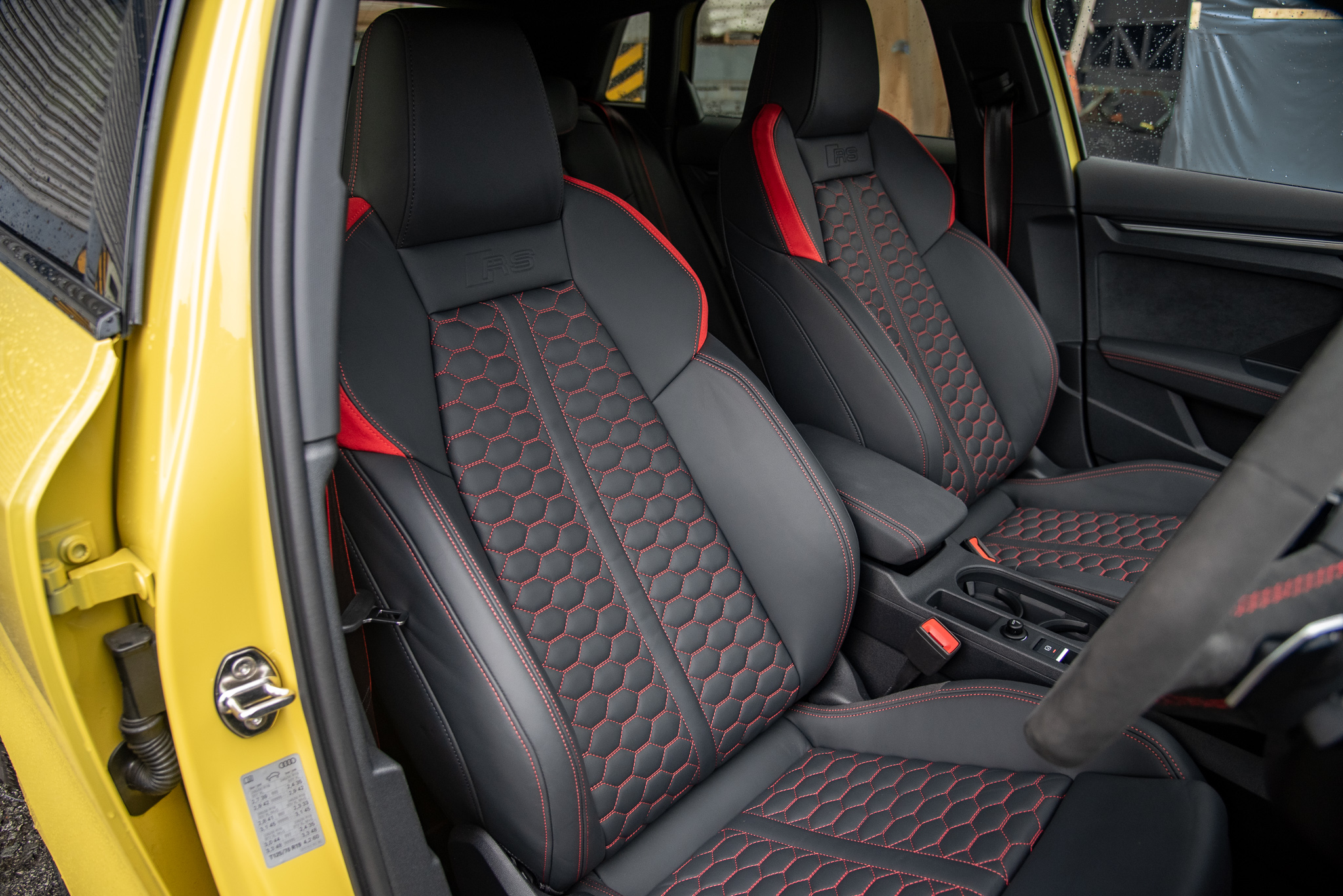
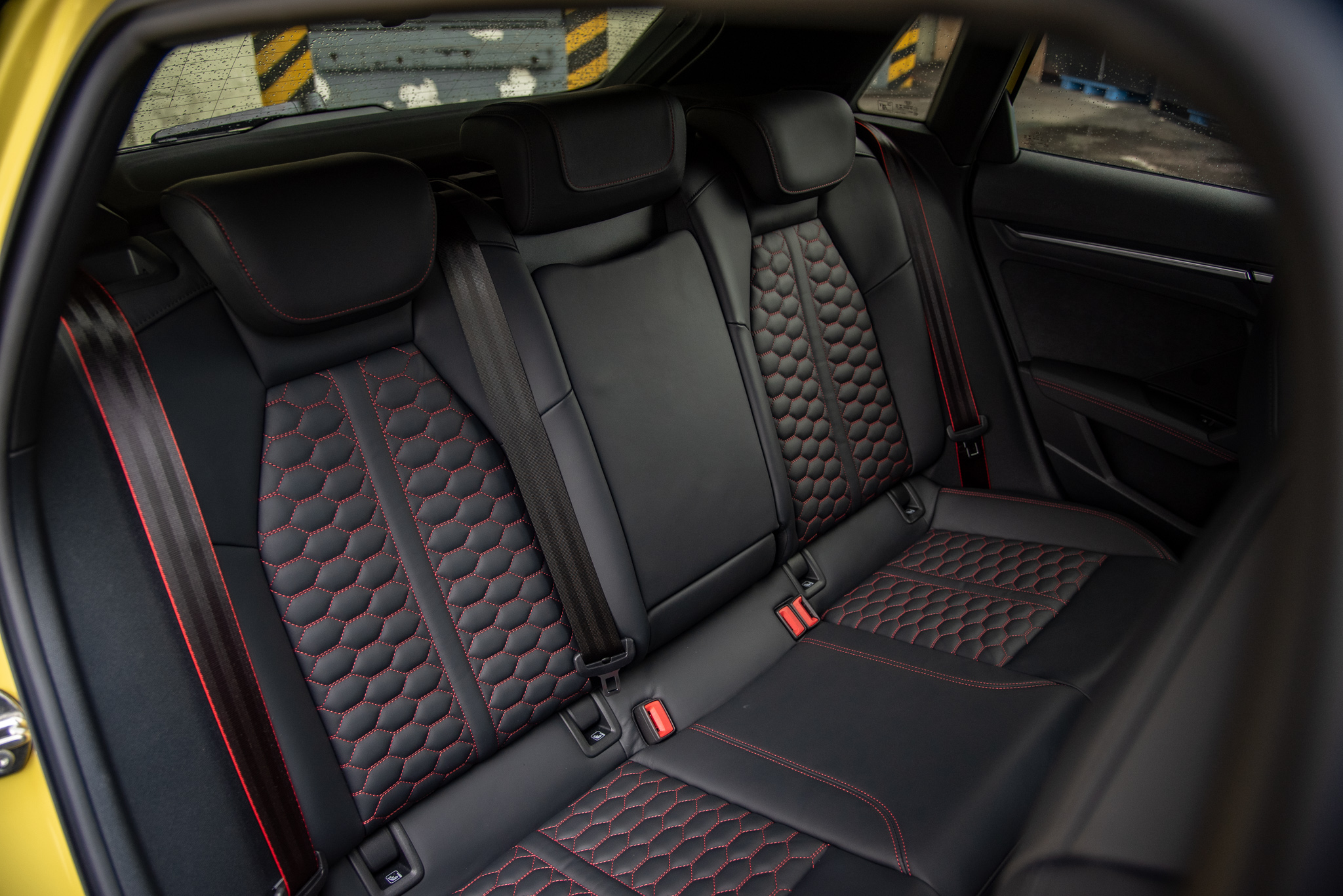
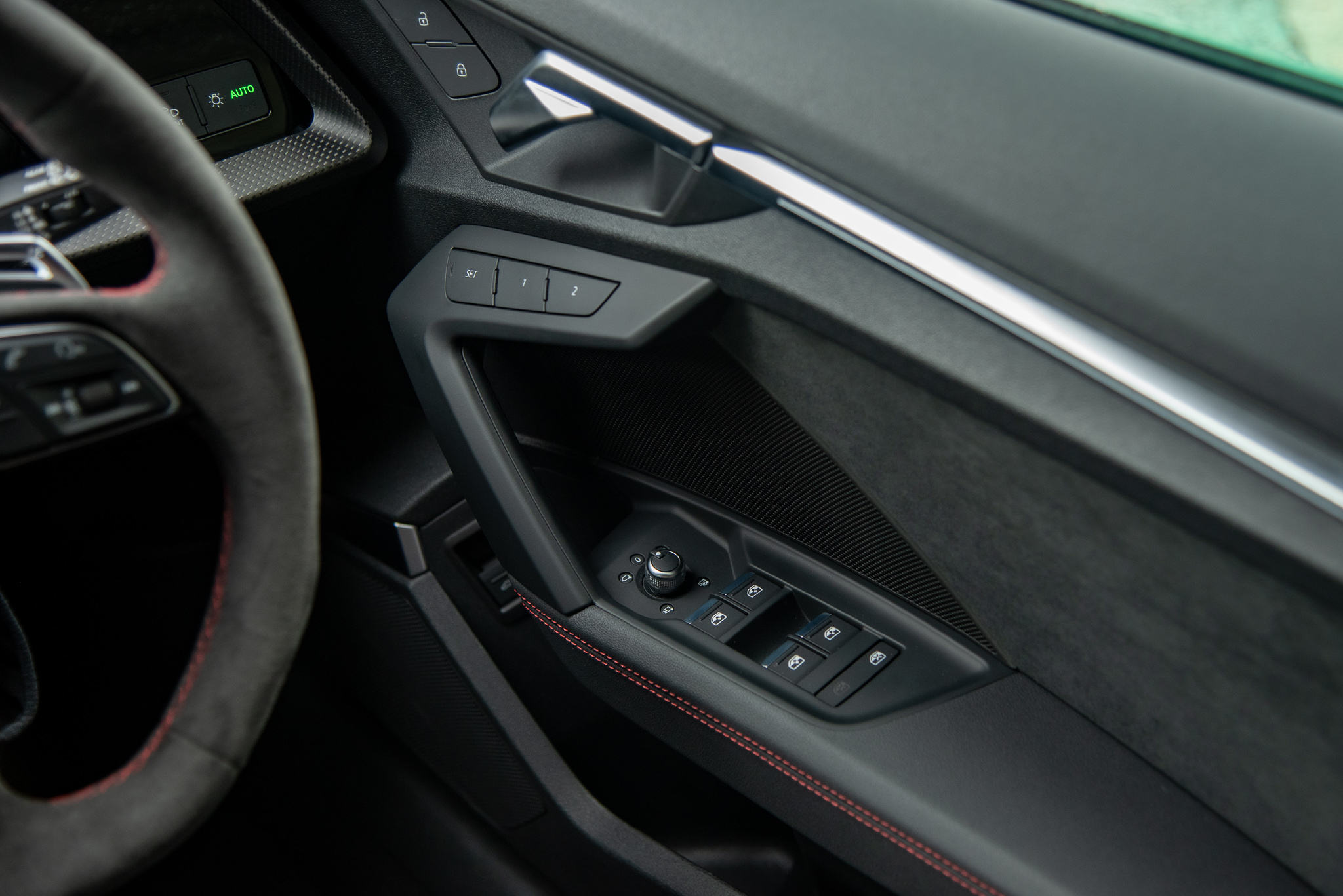
It goes without saying, Audi’s RS performance vehicles are supposed to invoke a sense of thrill and excitement when you step into the cabin. However, the cabin of the RS 3 is, dare I say it, a tad lacklustre for an RS car. Cabin space is generous, to say the least, with ample head and leg room. And it's posher than anything else from the VW group’s MQB EVO-based offerings, sure. But not quite worthy of a car that carries the torch for Audi RS’s smallest compact hatch.
That being said, the RS 3’s charm doesn’t lie in the way the cabin looks and feels. It isn’t even down to the shouty exterior looks. It boils down to the way that the RS 3 puts its explosive power down to the road.
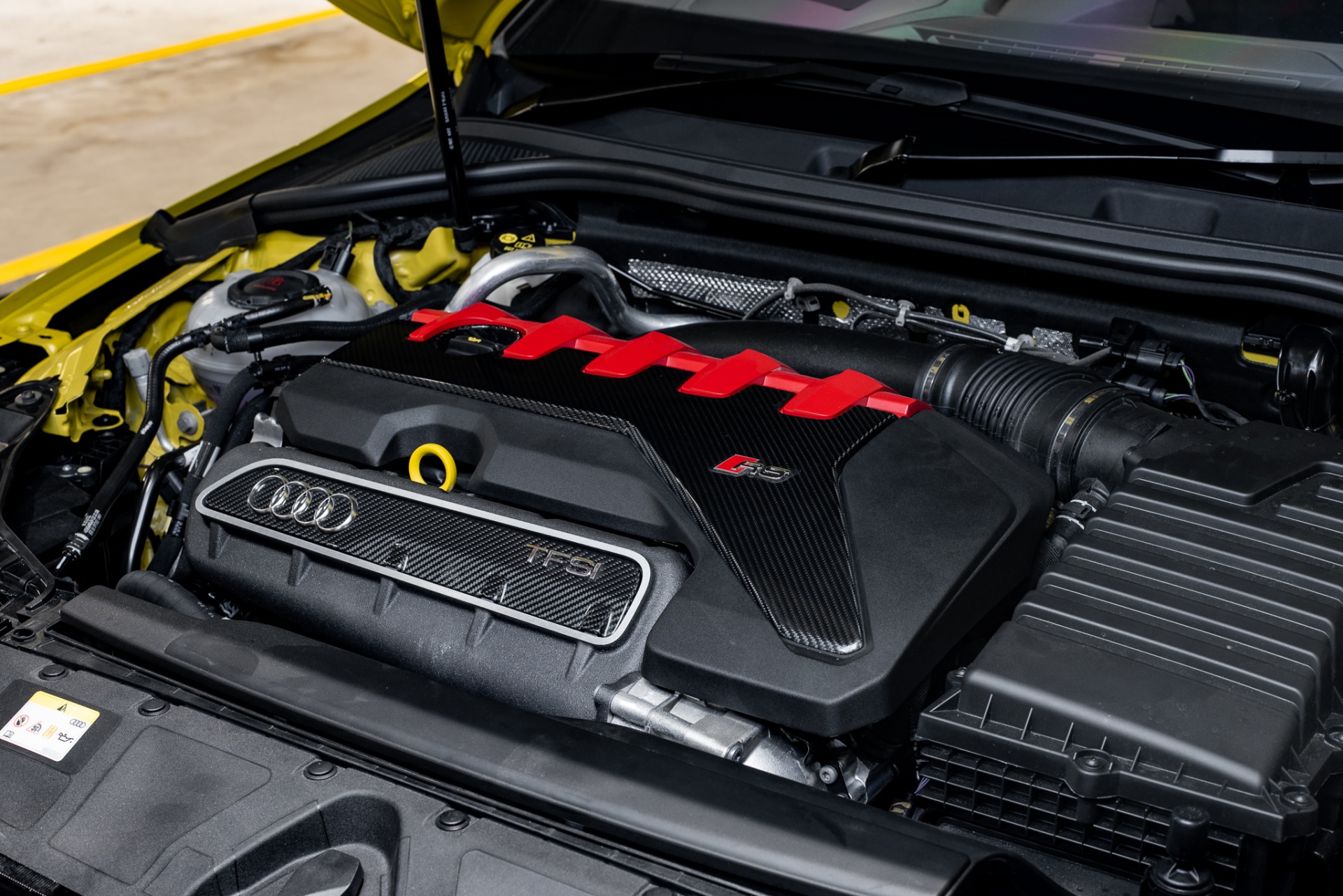
Audi RS 3 Sportback - Engine and drivetrain
And the piste de resistance of all that firepower, the soulful turbocharged 2.5-litre 5-cylinder under the hood. It’s an engine carried over from the previous generation car, although it gets 20Nm more torque than before. In this generation, the RS 3 produces 400 horsepower and 500Nm of torque. 0-100km/h is dispatched in 3.8 seconds and uninhibited, it’ll top out at 250km/h. Those are some impressive numbers, but the RS 3 has other tricks up its sleeve that endow it with some tail-happy traits.
In simpler terms, this generation RS 3 can drift. That’s an impressive feat for an all-wheel-drive car, but there is a method to the tyre-killing madness.
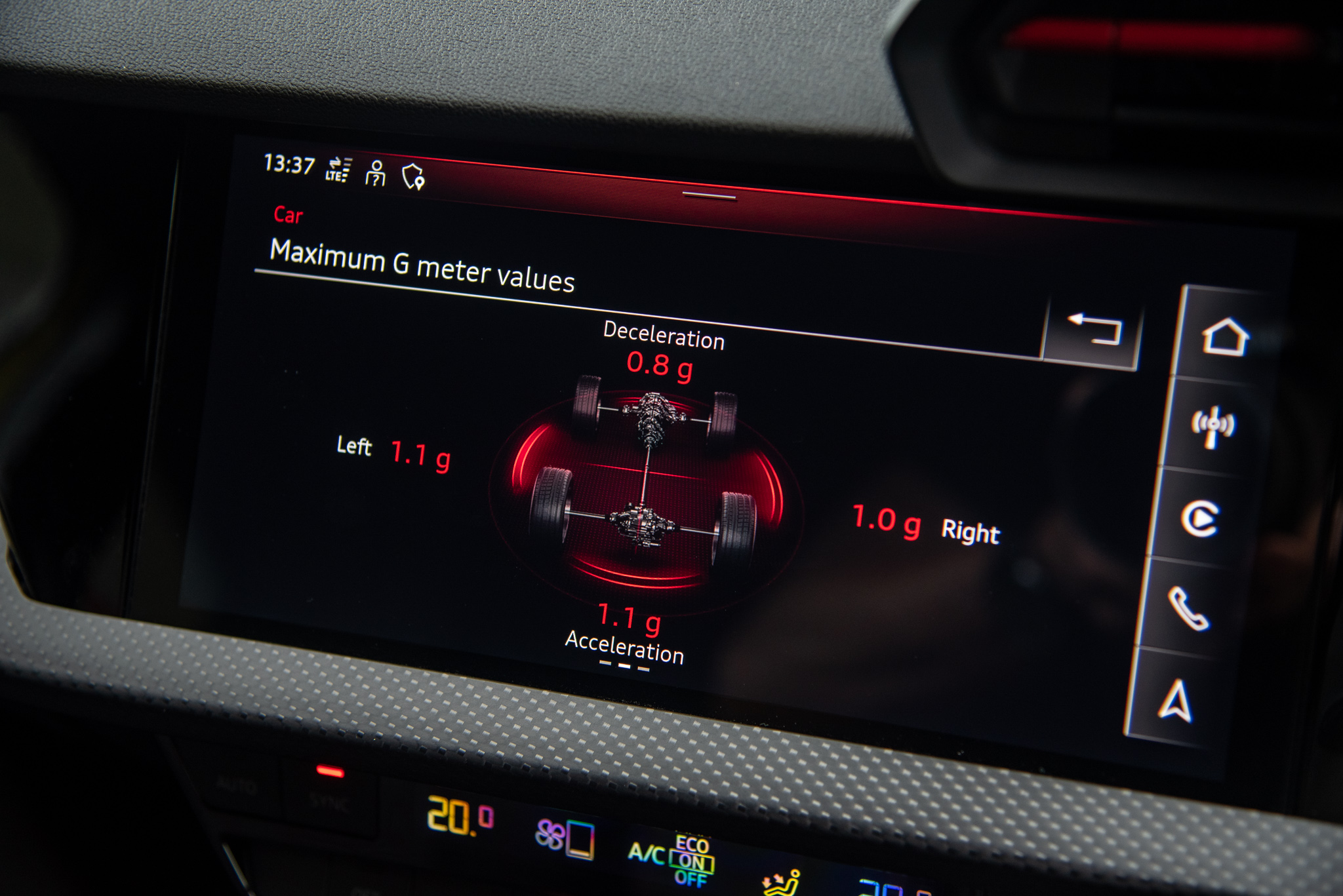
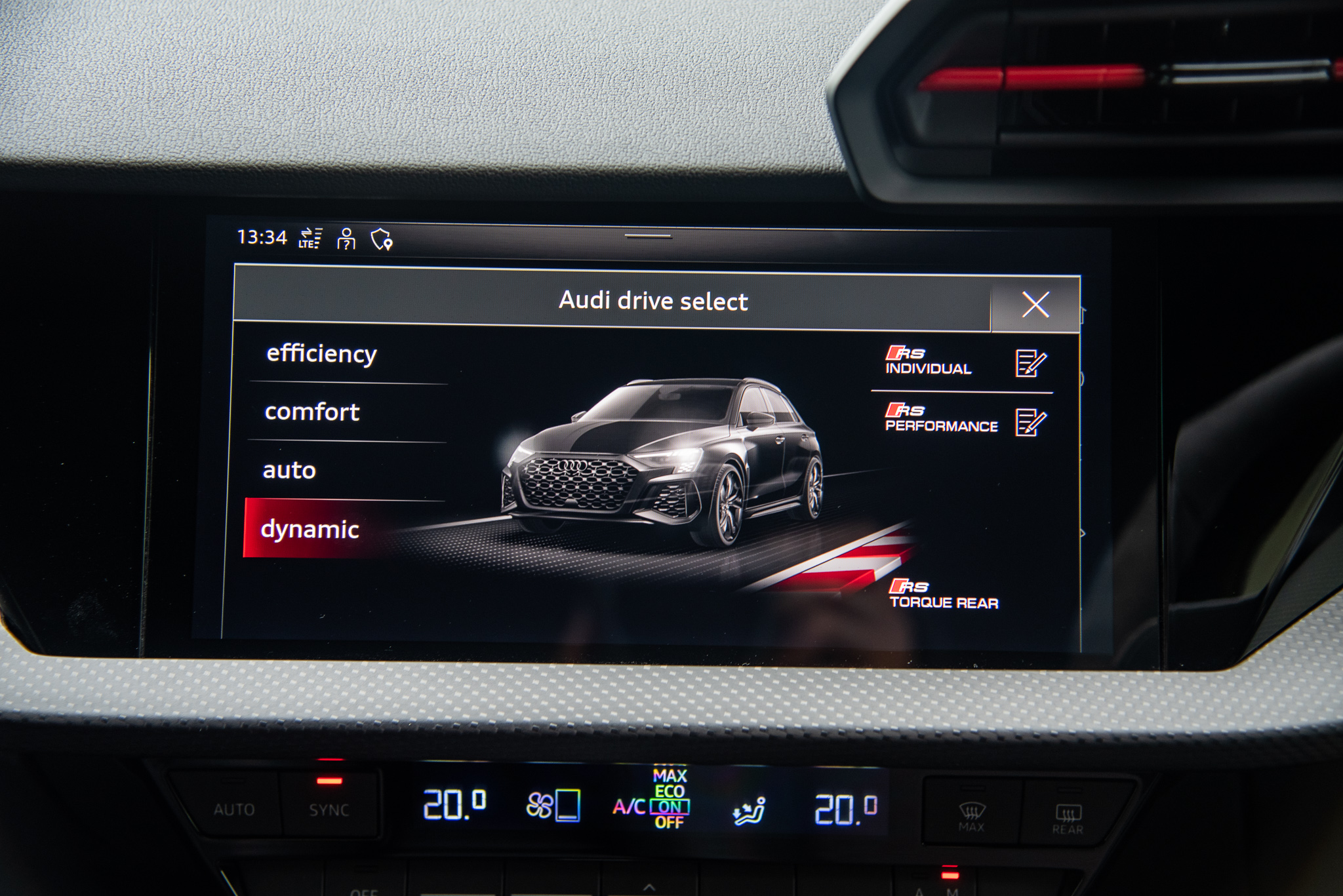
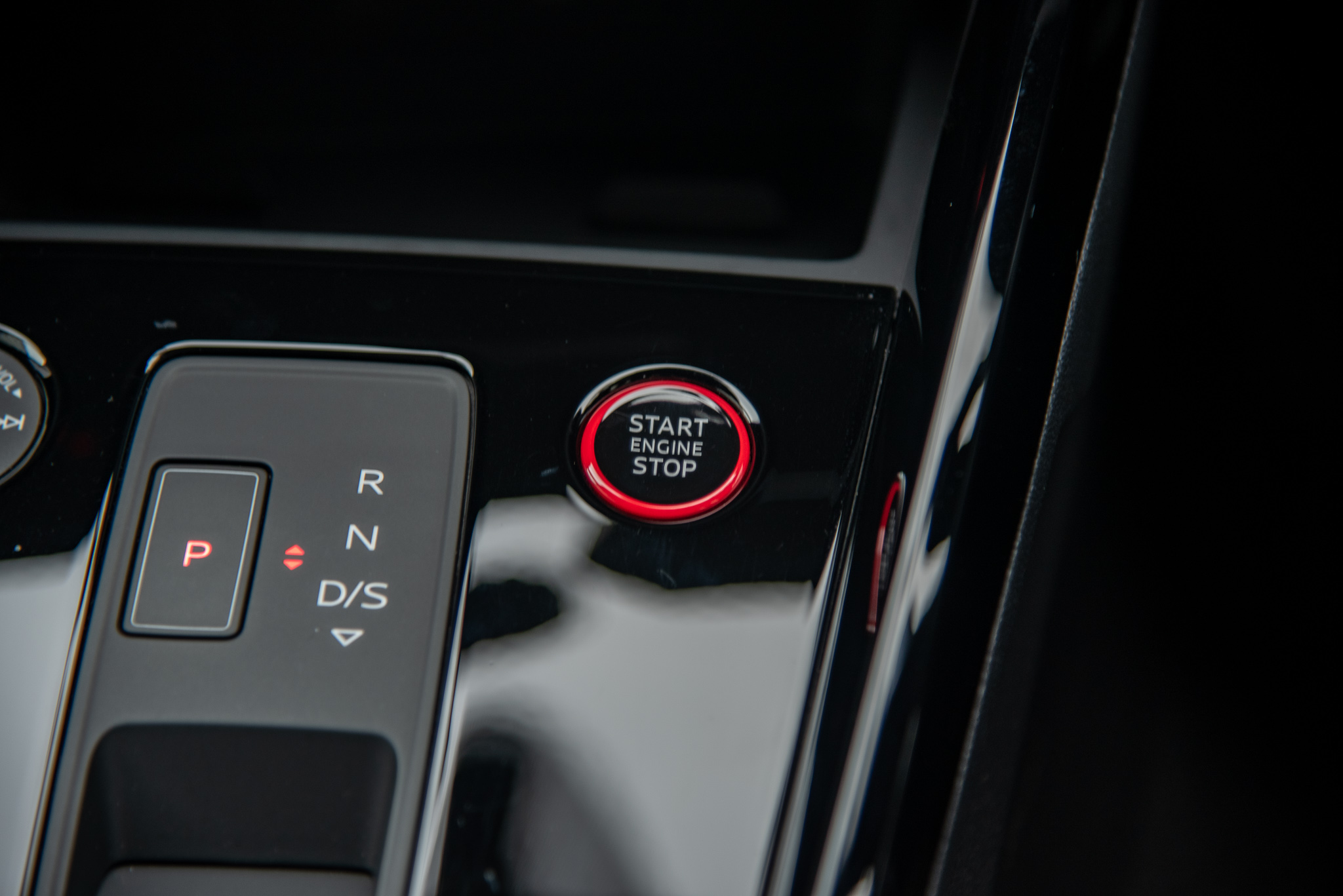
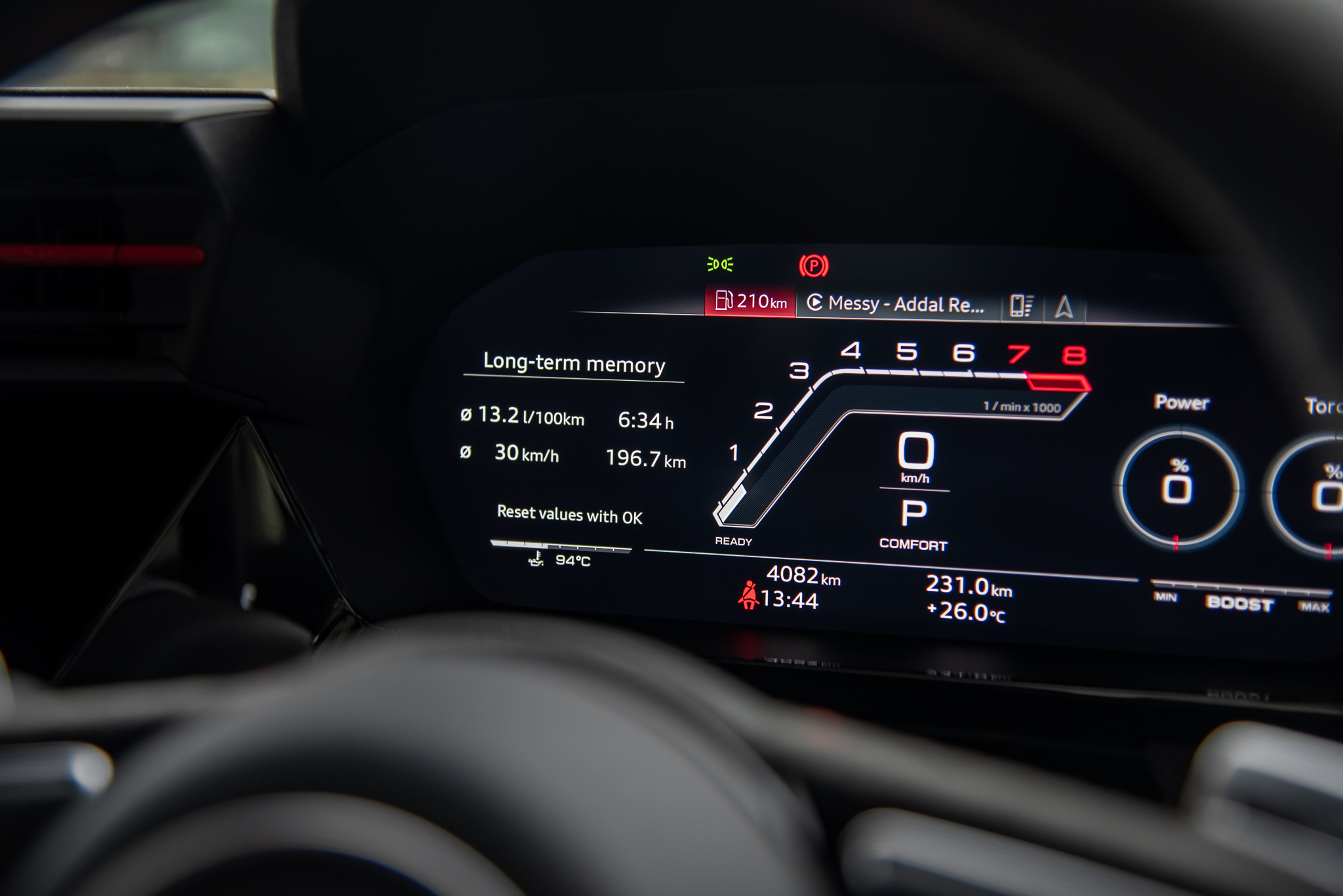
The new RS 3’s quattro AWD system splits the power 50:50 between the front and the rear axles. While the front axle gets a mechanical diff, the rear end is fitted with something Audi is calling an RS Torque Splitter. The first system of its kind that’s been fitted to a production Audi vehicle.
Essentially, the RS Torque Splitter is an electronic differential with an electronic clutch pack that can send 100% of the power in the rear to either wheel. Basically, it’s a torque vectoring system that reduces understeer and allows the car to oversteer. In more dynamic driving situations, it’ll send all the rear power to the wheel on the outside line to push the back end out for an extra dose of showmanship. To further combat understeer, the 19-inch rims are wider in the front than they are in the rear (265mm versus 245mm in the rear).
The question is, how does that translate on the road?
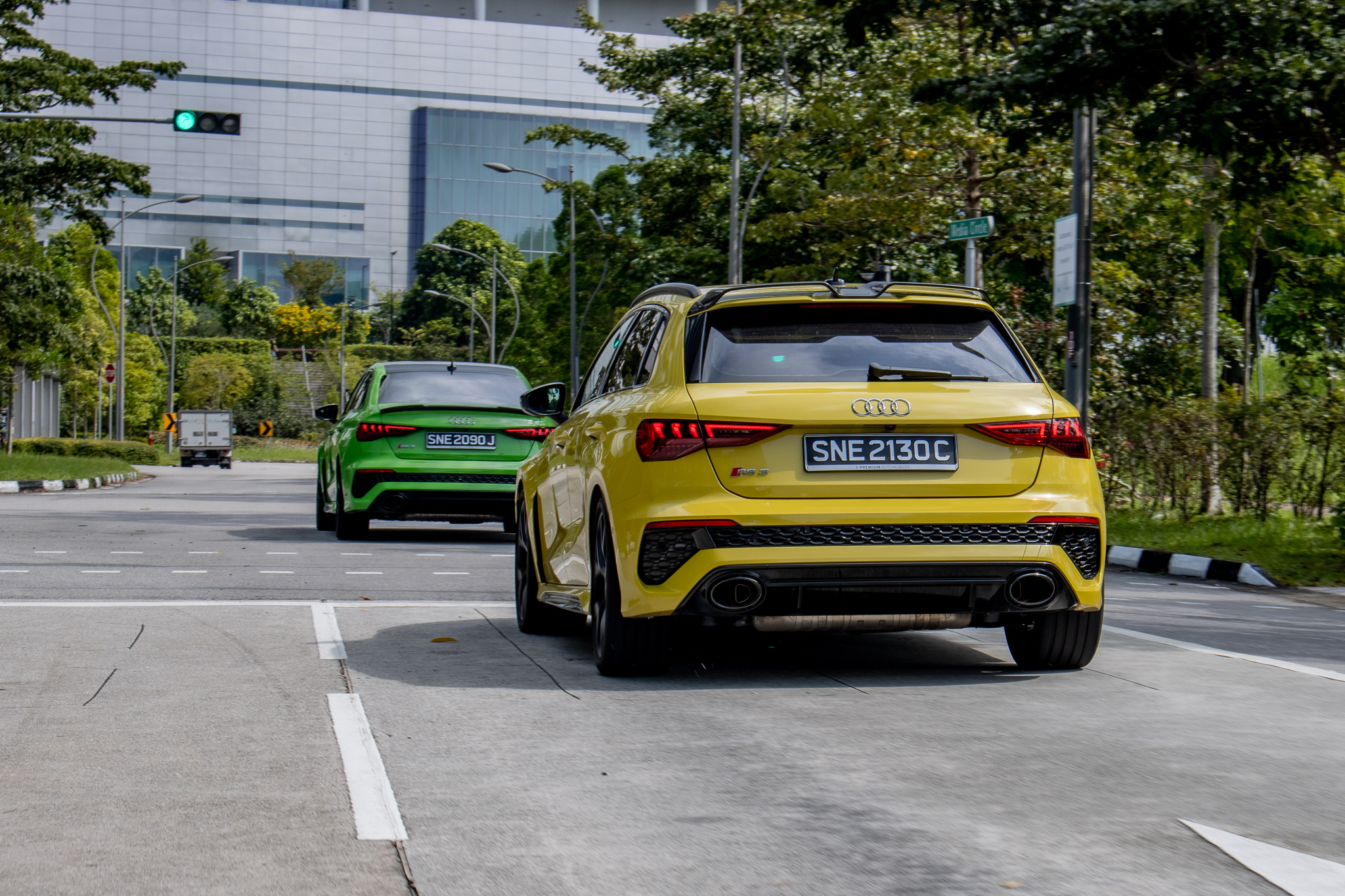
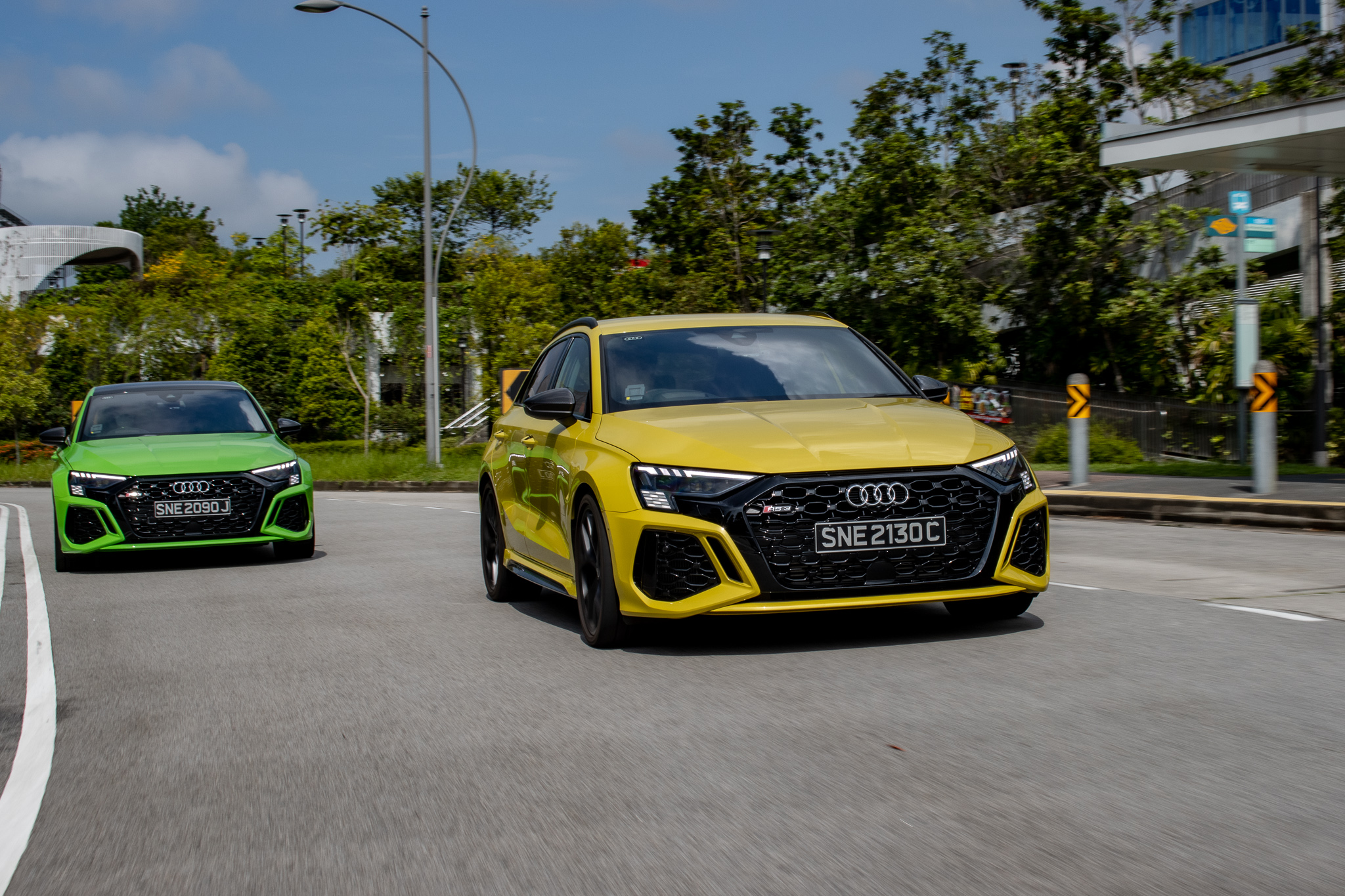
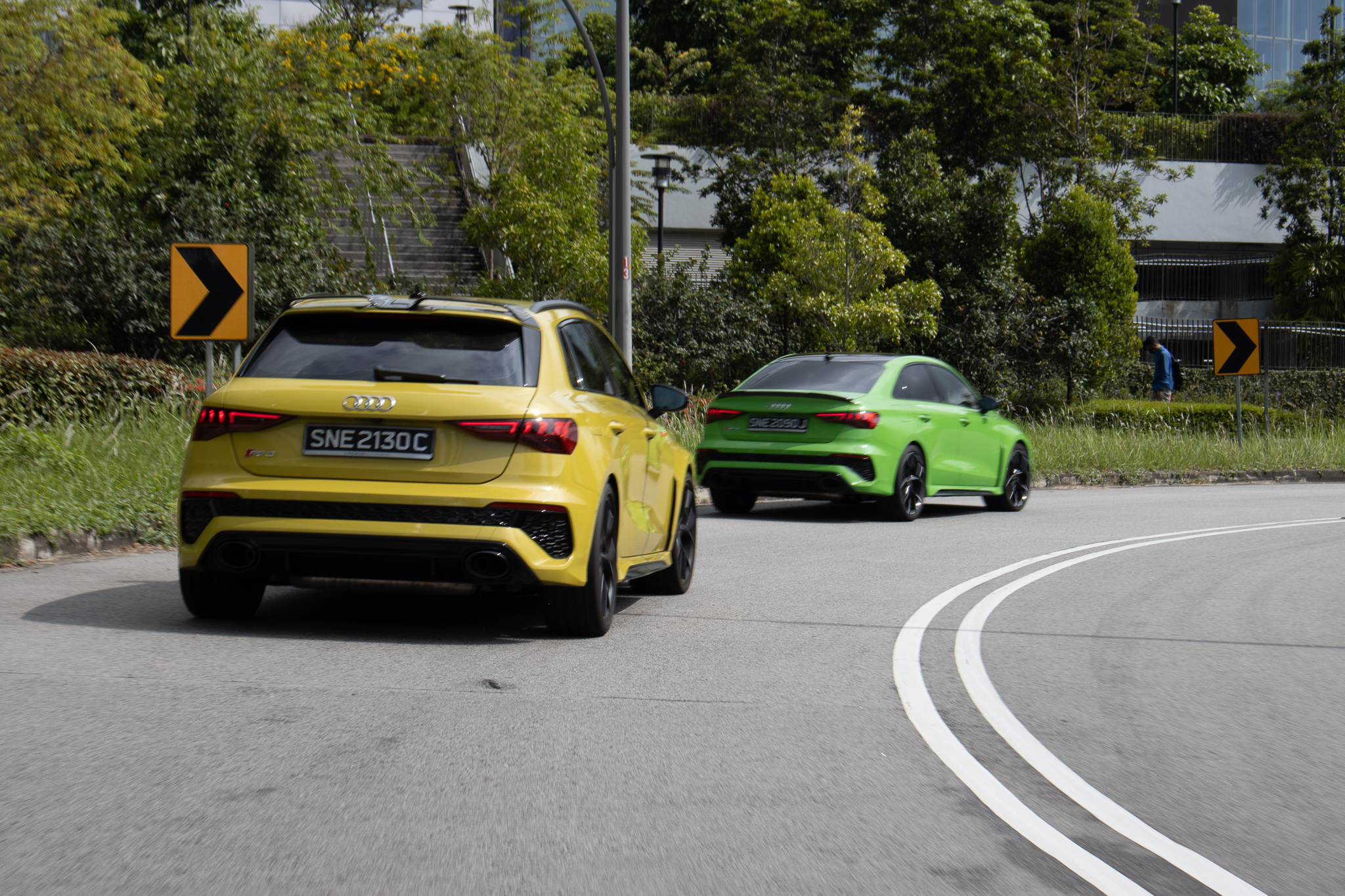
Audi RS 3 Sportback - On the road
In the car’s more sedate driving modes (efficiency, comfort, auto), the RS 3 is a perfectly understated car that behaves amicably in the daily grind. While the performance-spec dampers are on the stiffer end of the comfort spectrum, they do a perfectly decent job of suppressing harsher bumps and undulations than one would expect from a performance car such as this.
But when you chuck it into its dynamic (or RS) drive modes, you'd come face to face with the RS 3’s potency and ferocity when you mash the throttle. The exhaust flaps open up and the engine belts out its drum and bass symphony, firing all cylinders in 1-2-4-5-3 order. Every hiss of the turbos spooling, every upshift blip and every time you pin it to its 7000rpm redline, the car sings its infectious sonorous tone and spurs you to sink your right foot deeper into the floorboards.
Admittedly, the 7-speed dual-clutch box does struggle to put the car’s 400hp/500Nm prowess down to the road under intermittent or sudden throttle inputs. But when it hooks up and goes, you’d quickly find yourself on the wrong side of the speedometer and the local Five-O. When that moment comes, you’d be very thankful for the stopping power of the 6-piston brakes up front to slow the proceedings.
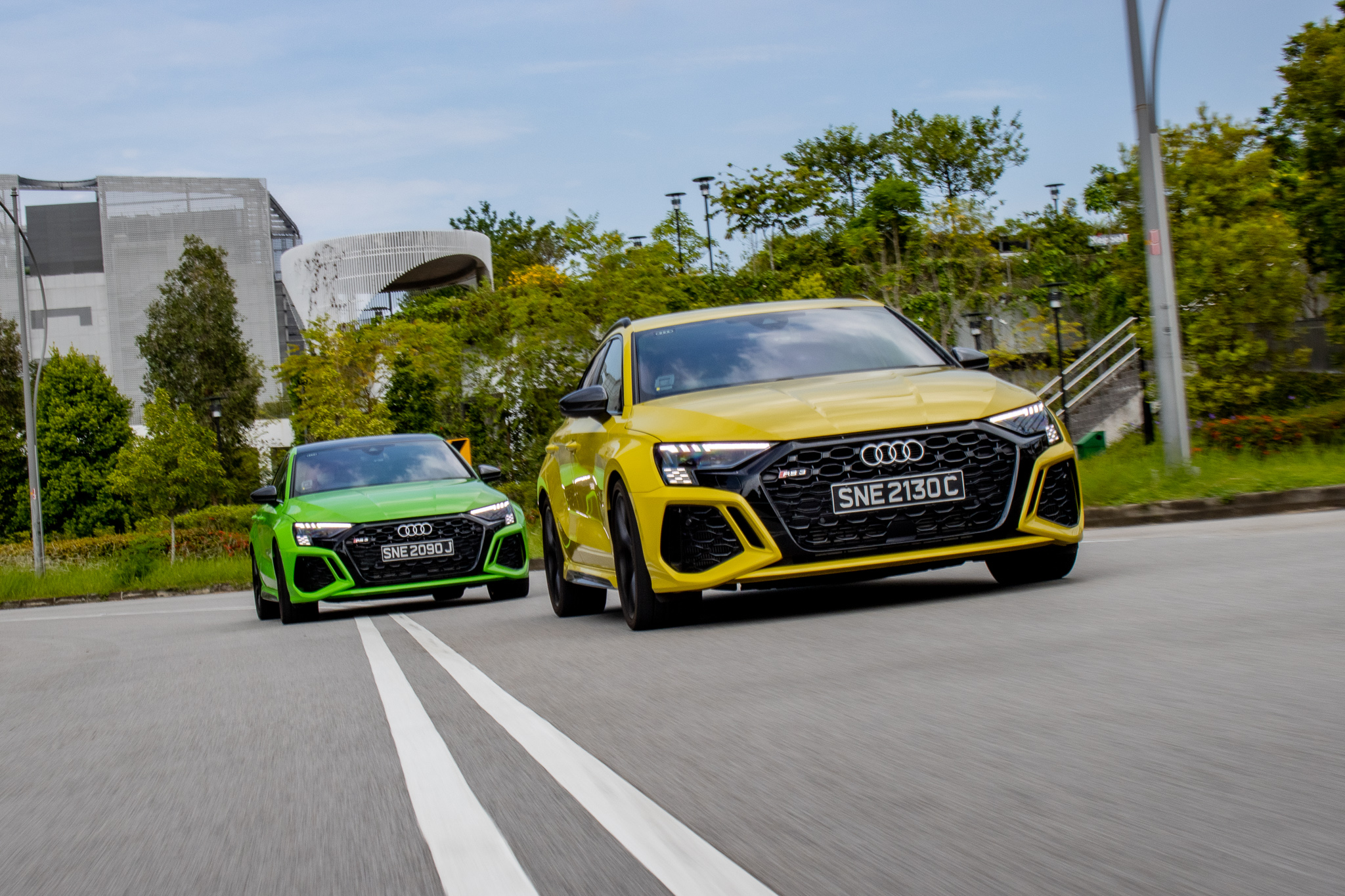
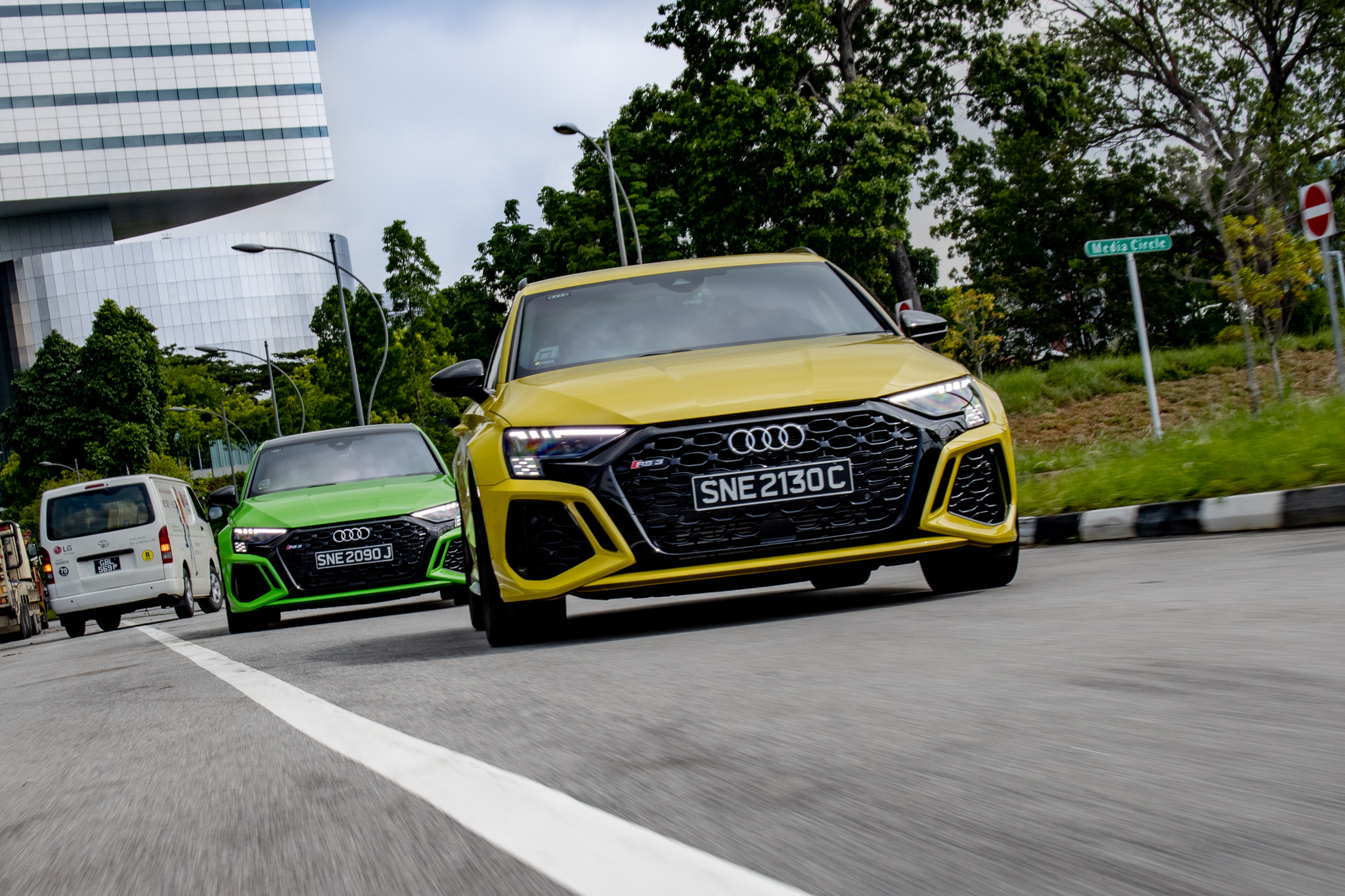
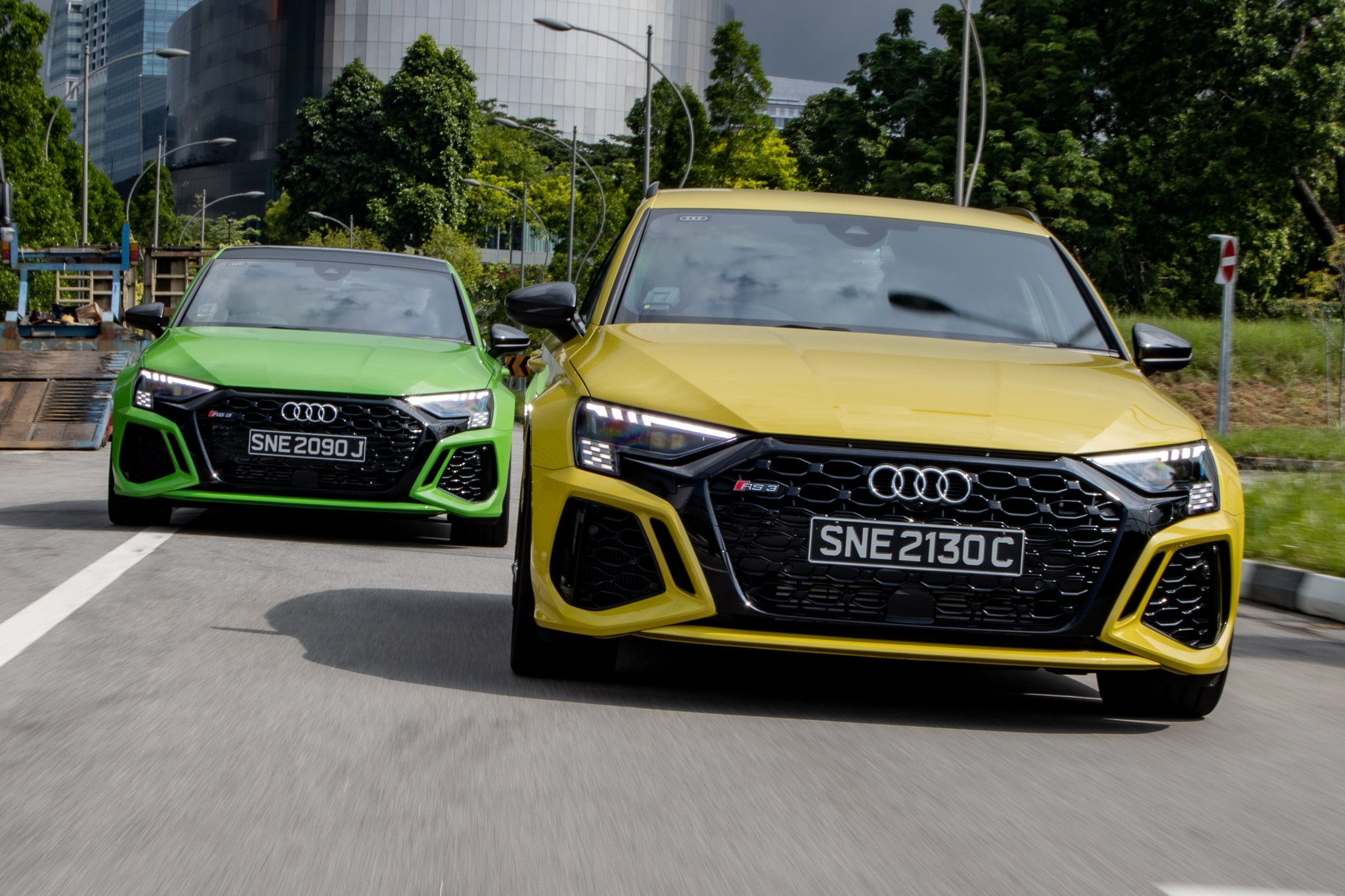
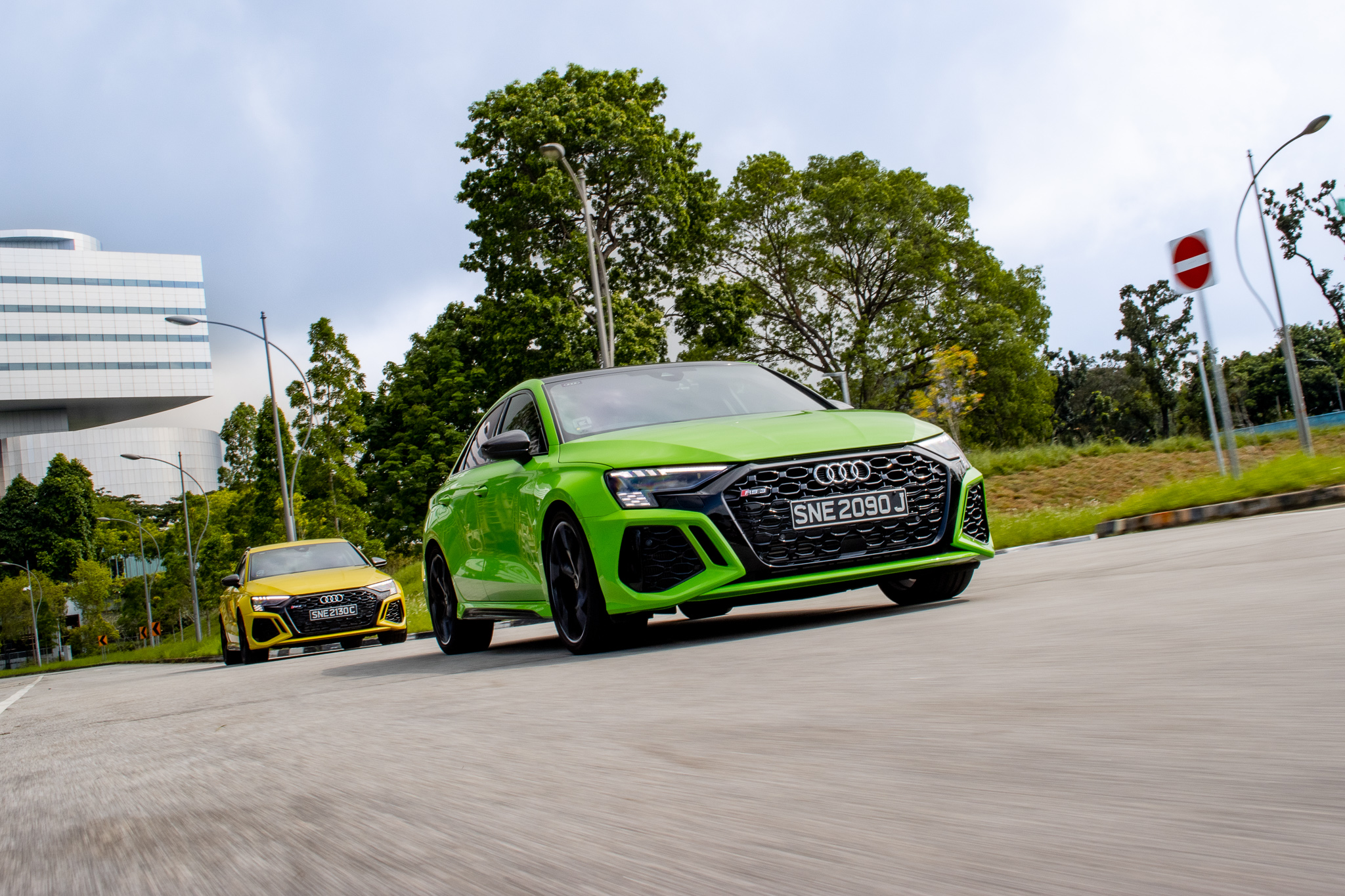
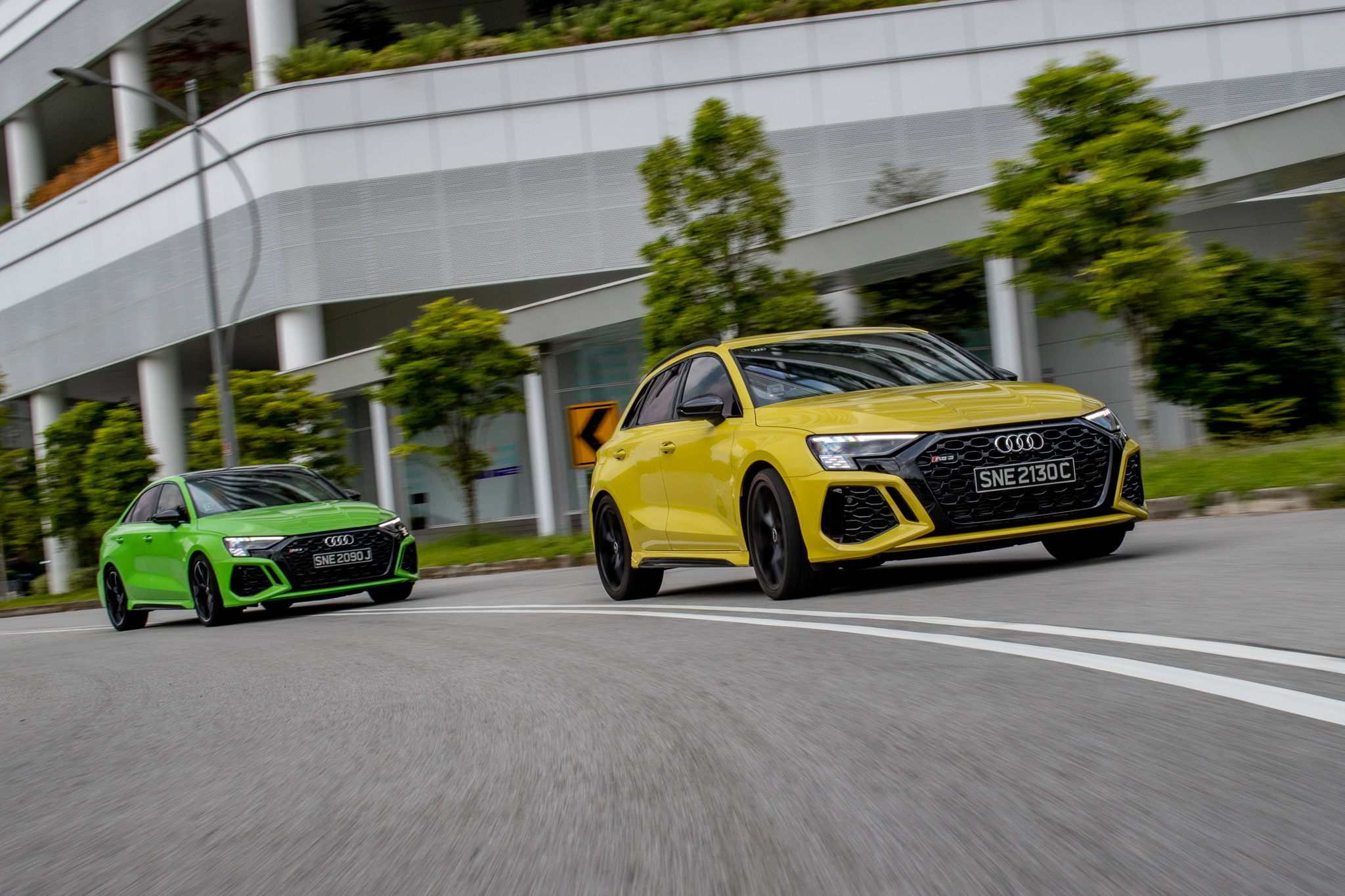
Audi RS 3 Sportback - How tail happy is it?
Admittedly, we'd been given strict instructions not to engage the car’s RS Performance and RS Torque Rear modes on public roads. Instructions that we tried to abide by for the sake of avoiding run-ins with the law or getting it wrong.
And in this case, there is a very real chance of getting it wrong. Even in dynamic mode, the back end has a tendency to sway when you’re gunning it hard. In RS Torque Rear mode however, you’d need lightning-quick reflexes and a lot of opposite lock to keep the front end on course. There’s no telling how much power is actually being sent to the outside line because tail happy as it may be, the RS 3 is still an all-wheel-drive vehicle. It might behave in a rear-biased fashion if the situation calls for it, but it is not rear driven. In the brief moment I sampled the rear torque splitter’s breadth of abilities in an enclosed area, my emotions hovered between euphoria and sheer terror. All amid screeching tyre noises and the 5-cylinder soundtrack.
Sure, it’s a hell of a show. One that could shred your tyres down to steel if you really wanted to, but a show that is best suited for a proper race track with expansive run-off areas in the event that something really goes wrong.

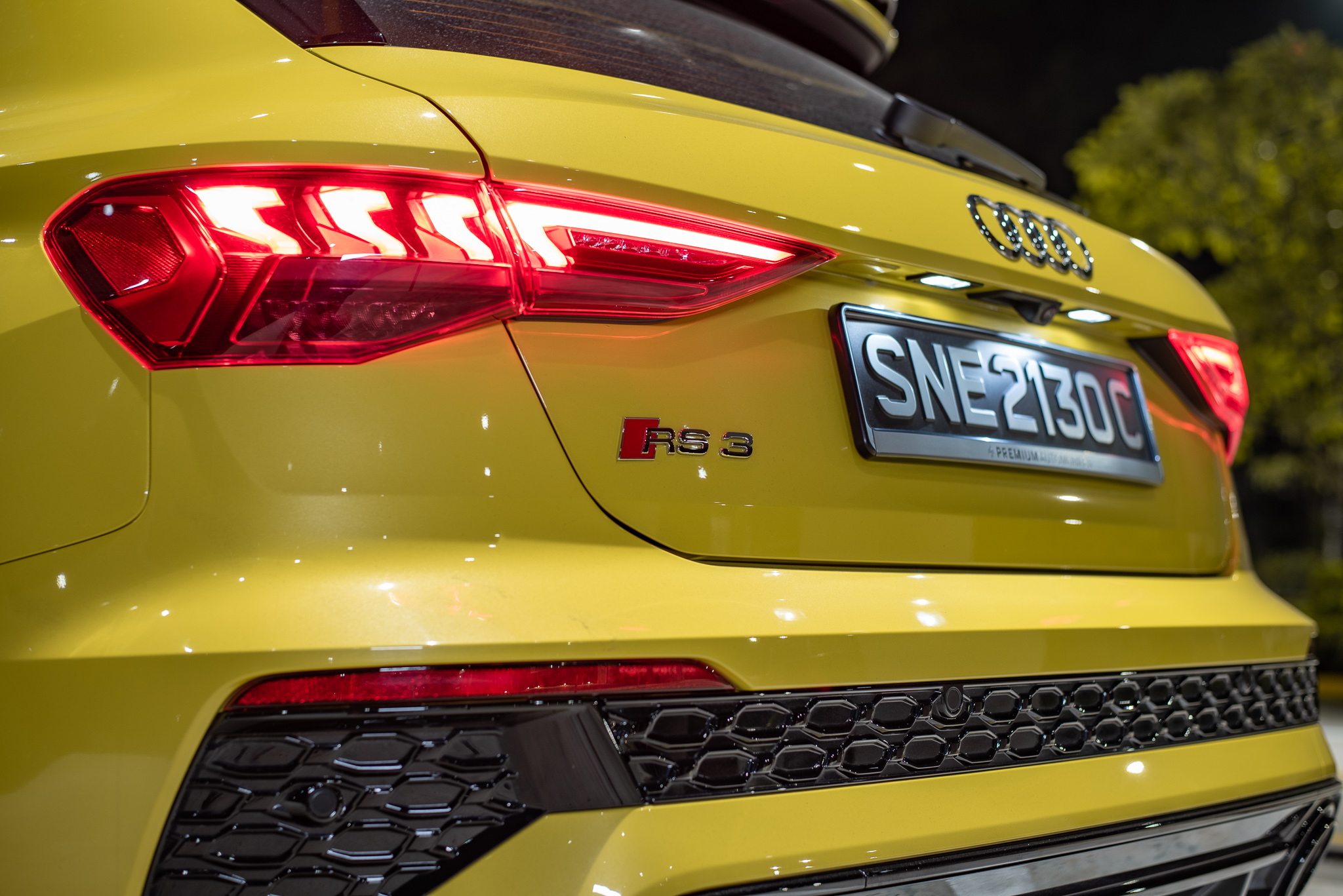
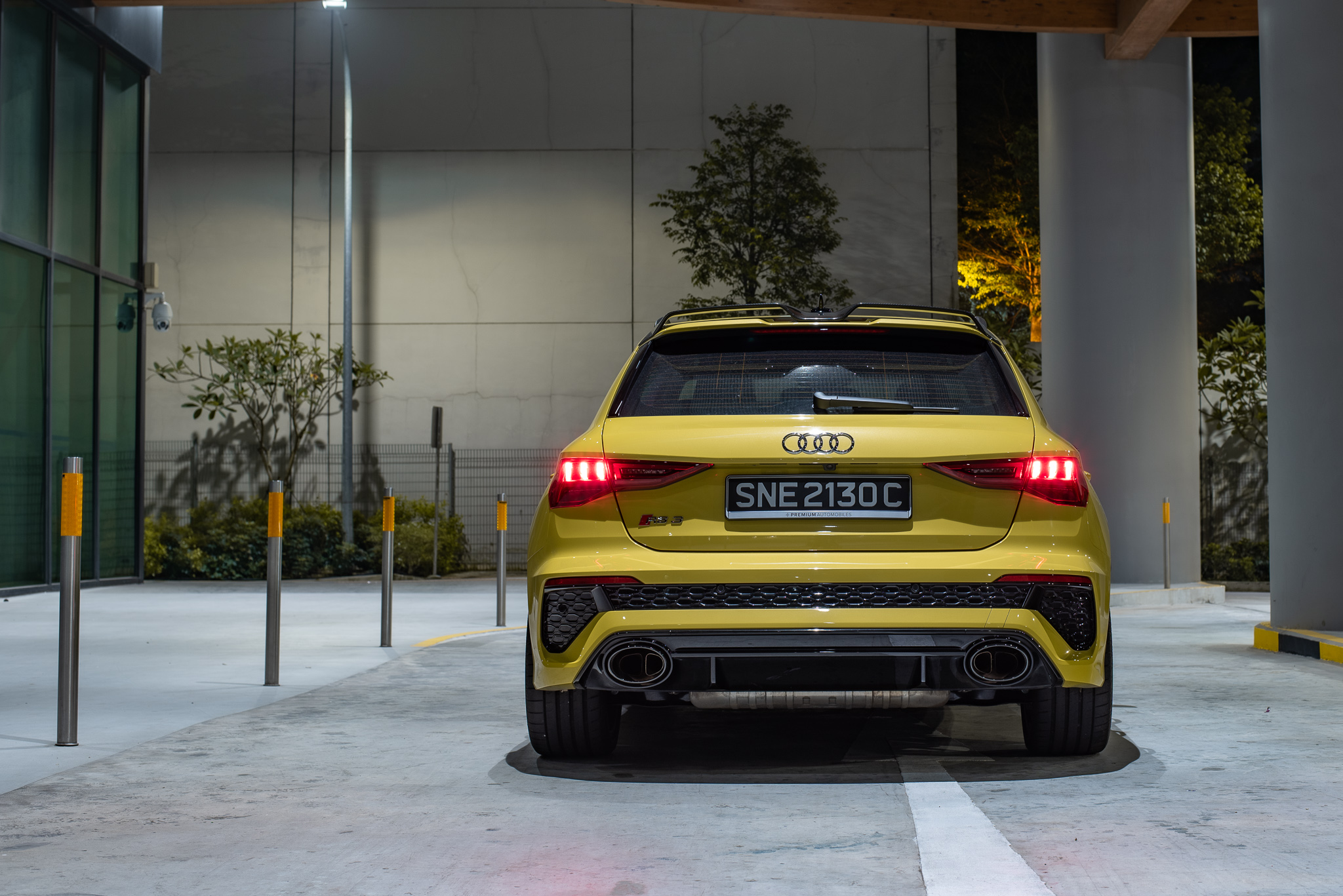
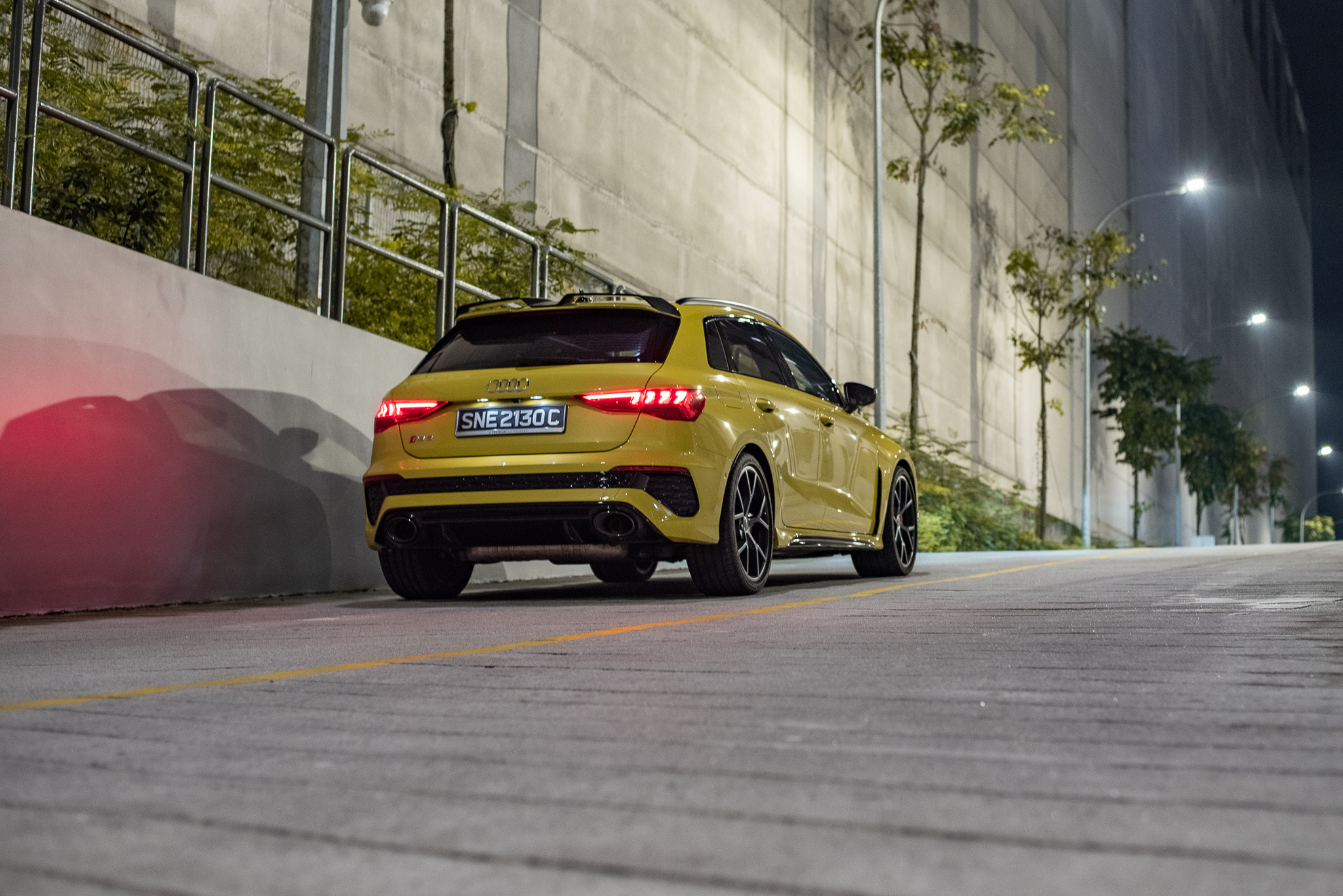
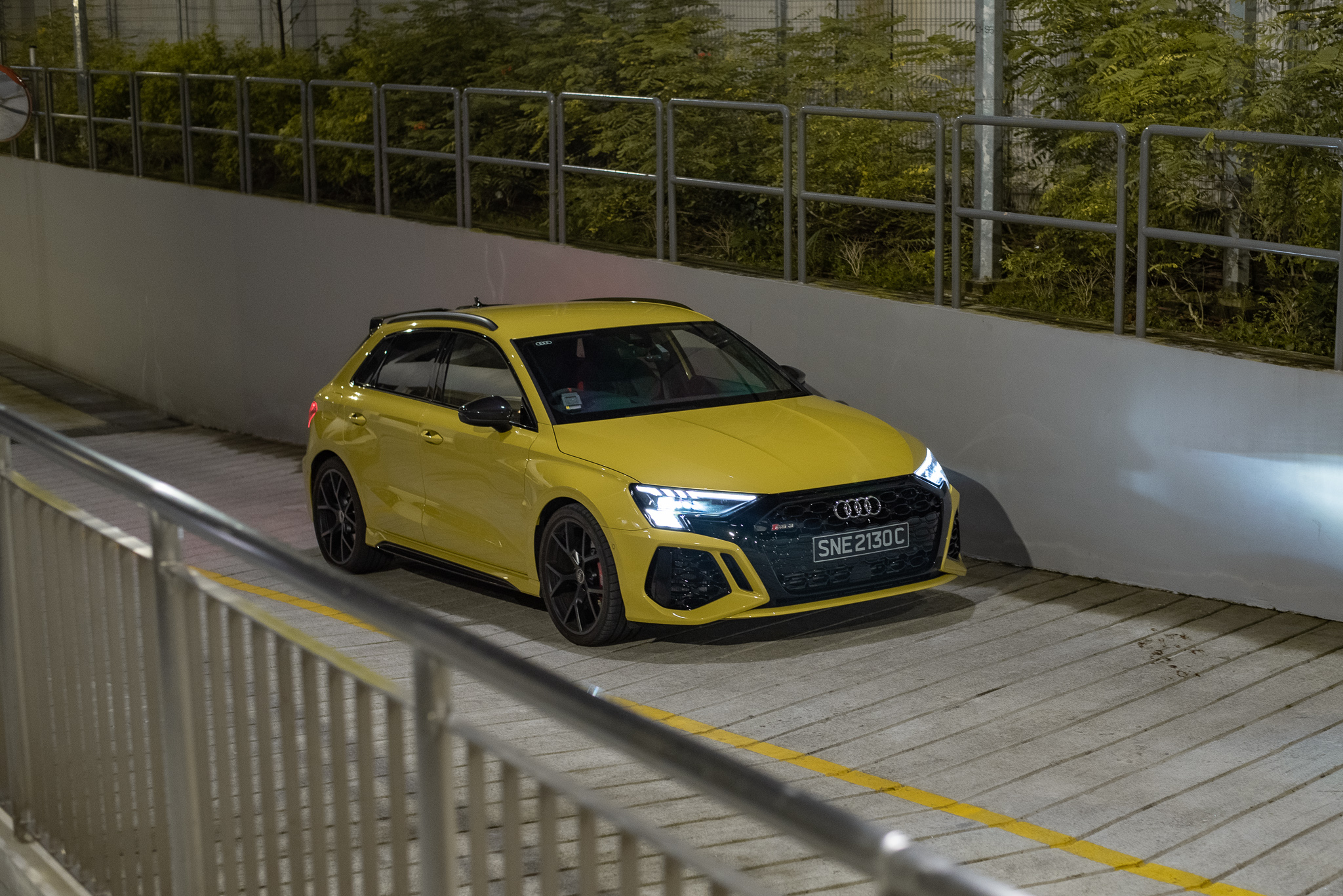
Audi RS 3 Sportback - Conclusion
Bear in mind that my experience with the car was predominantly limited to road use. But tail happy shenanigans and RS Torque Rear modes aside, the RS 3 Sportback is a stellar car that has a lot to offer. It grips the tarmac with such poise and pace, it’s got enough grunt to upchuck your lunch and it’s got damn near-as-makes-no-difference supercar performance. All wrapped up in a compact, practical bodyshell.
It is one of the most invigorating cars I’ve driven as of late. That evocative engine and bonkers pace leaves you wanting more and more with every prod of the throttle. Given time, it would awaken the deepest part of your manic psyche you never knew existed - as it did for me.
In a manner of speaking, this is a car that exists in the proverbial 25th hour of the automotive landscape, what with environmentalists gunning and lobbying for the demise of internal combustion engines. It shouldn't exist in this day and age, and yet it does. And I'm thankful for it. As pressures from global emissions continue rising, EVs are now being touted as the future of motoring. So in time to come, 5-cylinder engines like these (and nat asp V10 engines, by extension) would undoubtedly be phased out and replaced with downsized engines and some form of electrification tech. When that day comes, I shall be a very sad man indeed.
But I could be wrong. And I hope I am. Because this engine deserves to survive a little longer before being relegated to the history books. It deserves another last hurrah.
PHOTOS Jay Tee & Clifford Chow
Audi RS 3 Sportback
Engine 2480cc, inline5, turbocharged
Power/rpm 400hp/5600-7000rpm
Torque/rpm 500Nm/2250-5600rpm
Transmission 7spd S tronic dual-clutch
0-100km/h 3.8secs
Top Speed 250km/h (electronically limited)
Kerbweight 1570kg
Fuel Consumption 9.8l/100km
CO2 224g/km






